|
Off the beaten track in Beijing 17th October, 2012
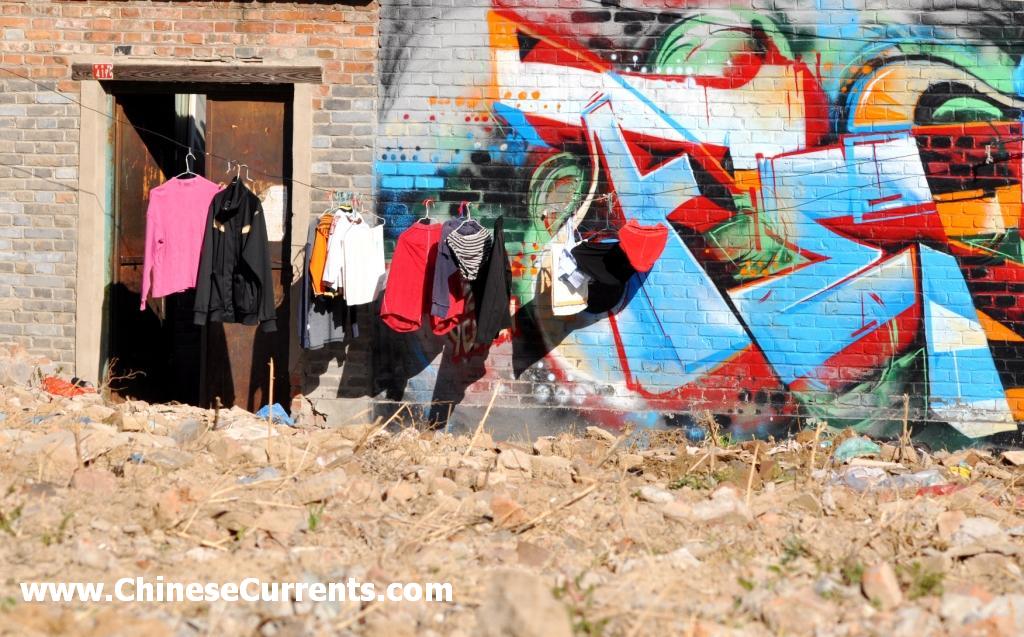
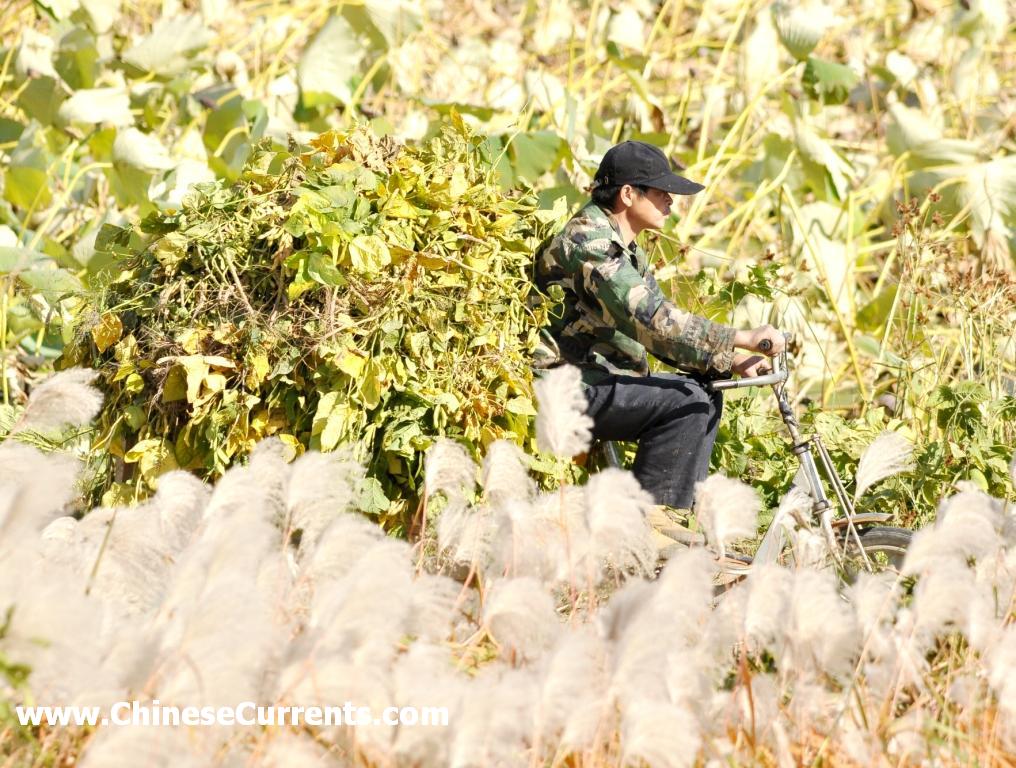


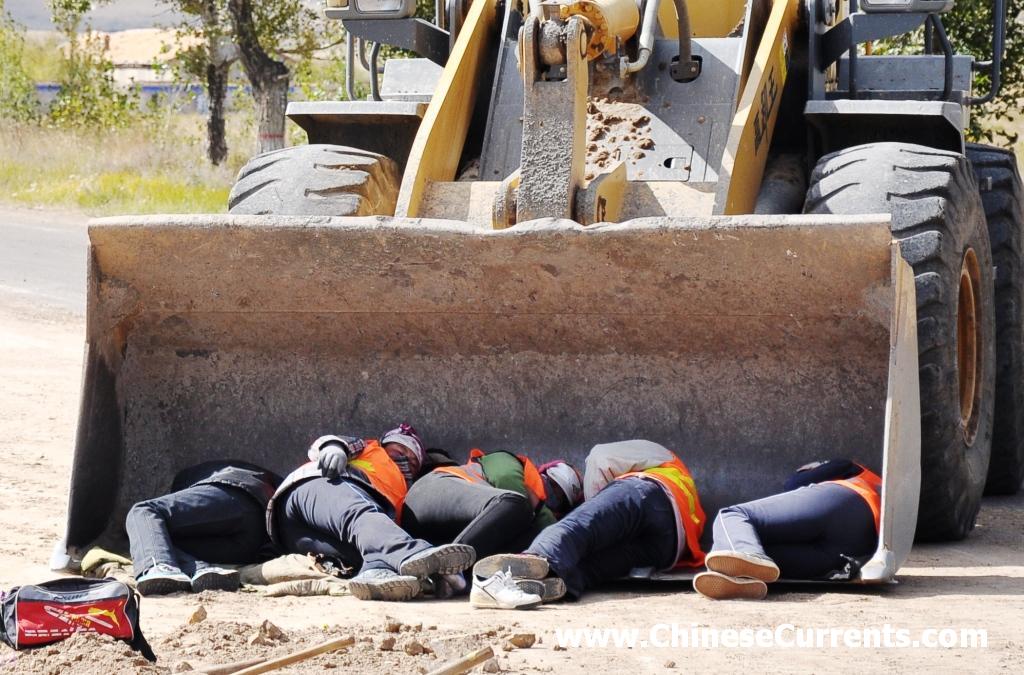
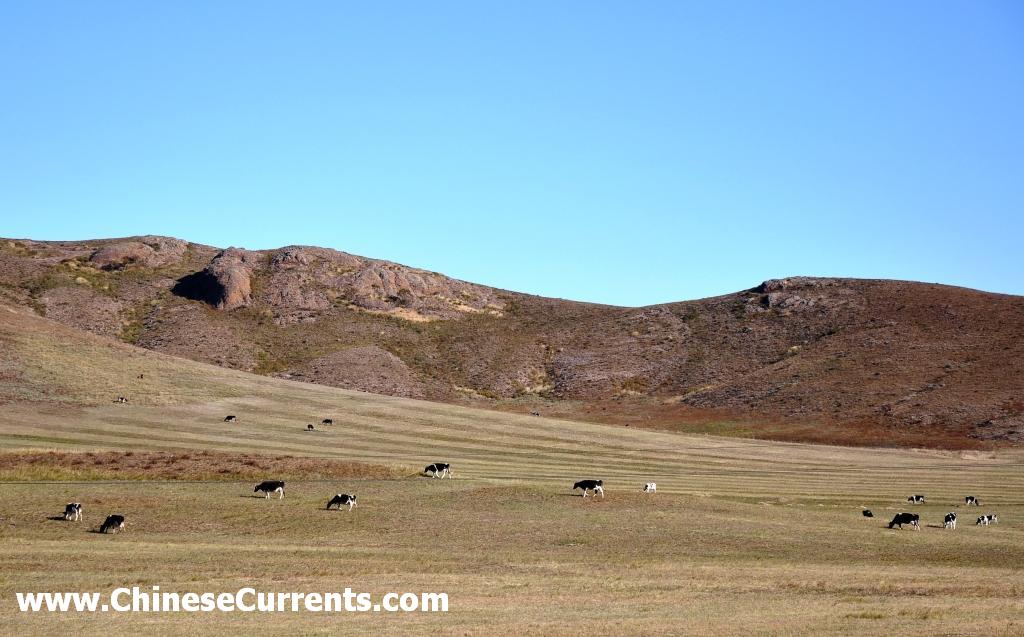
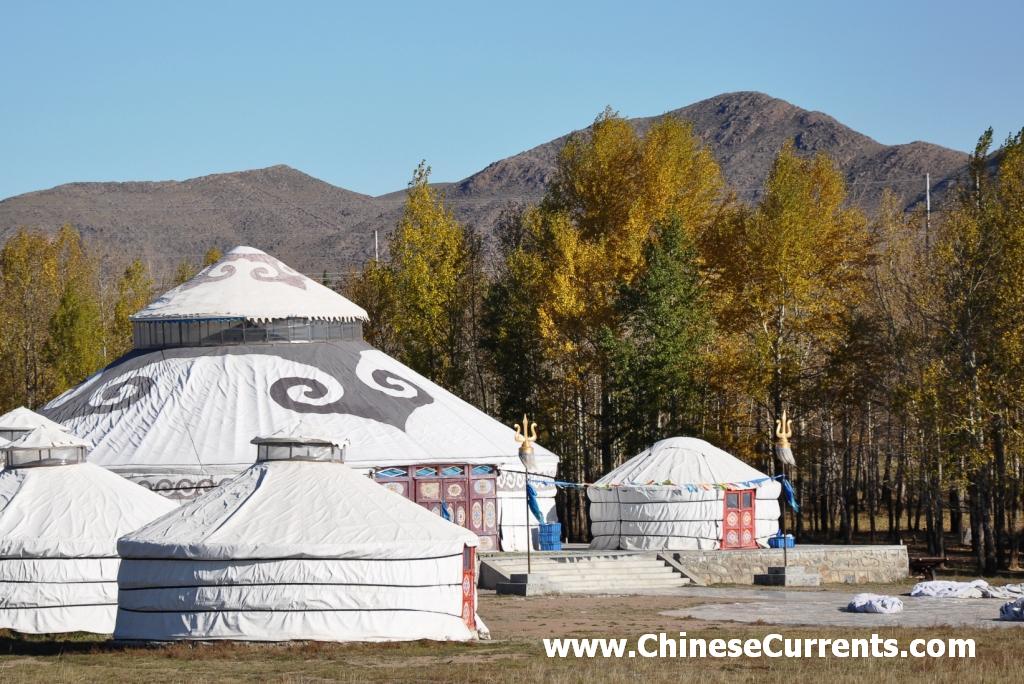
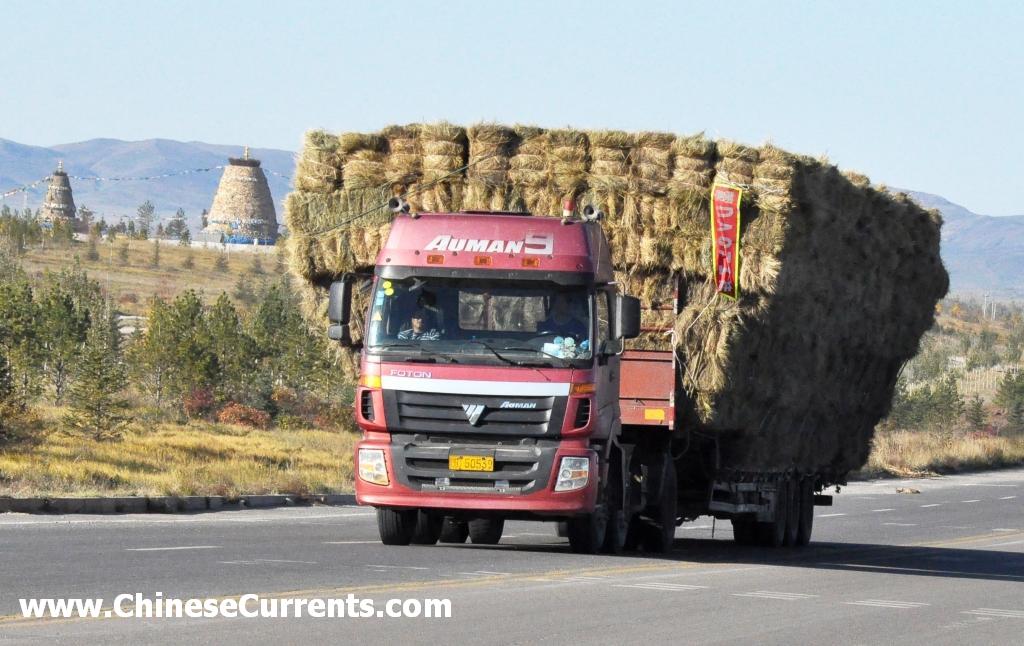
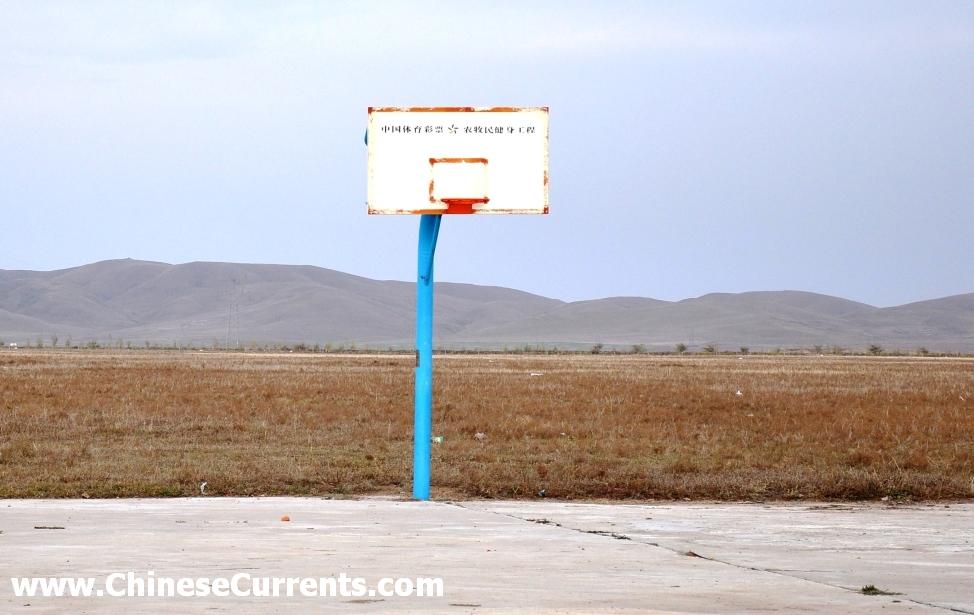
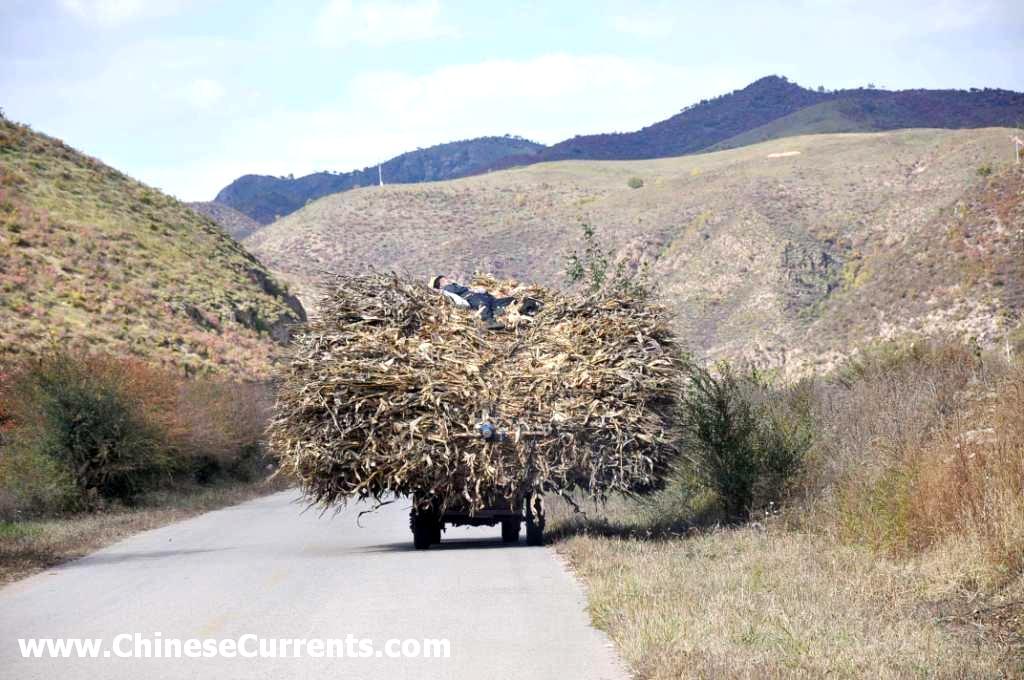



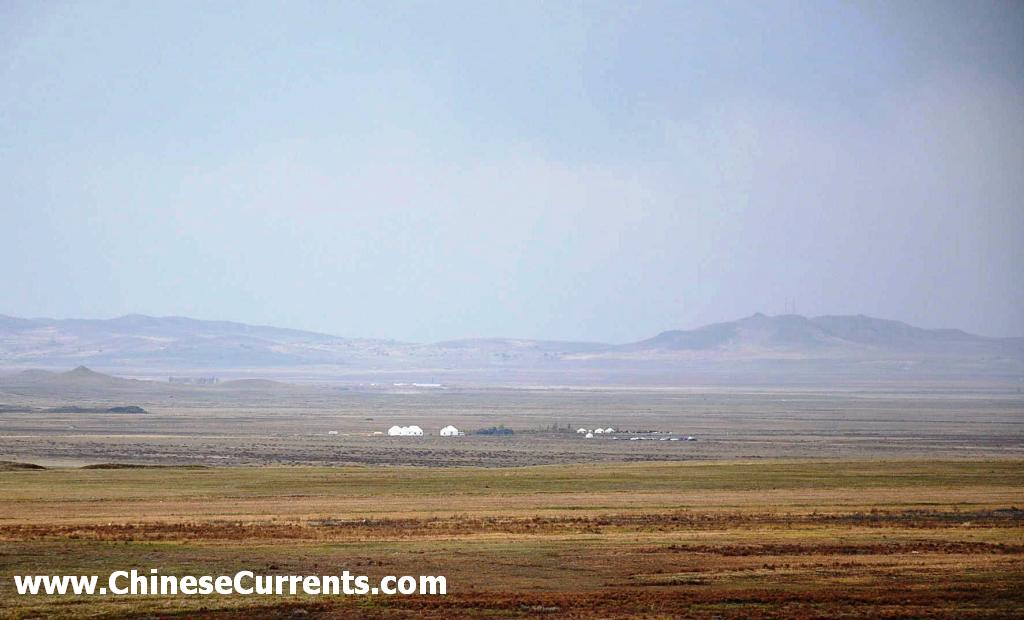
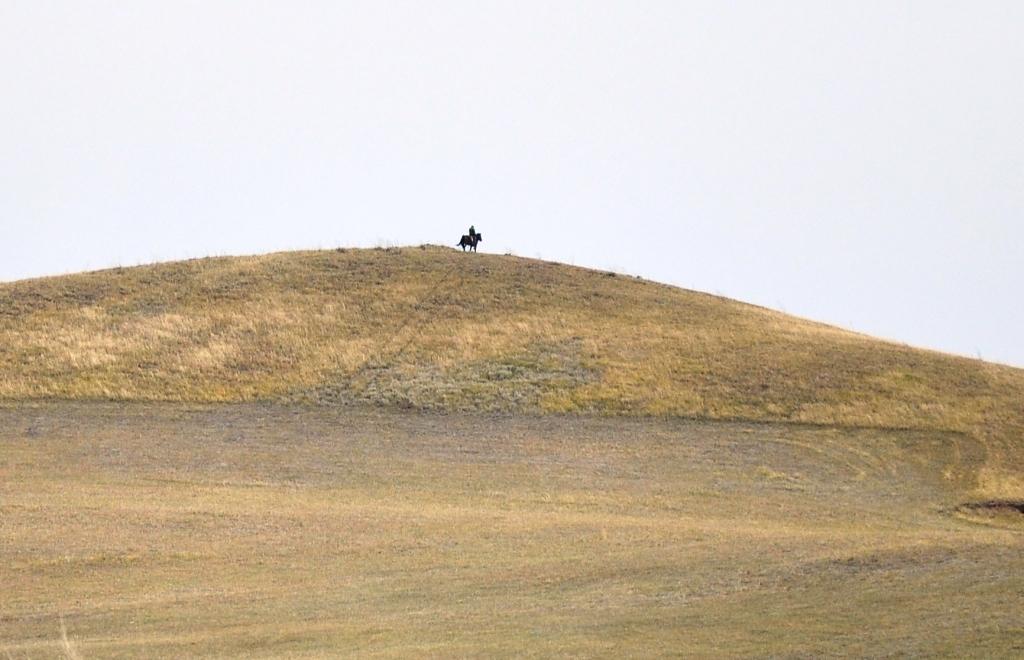

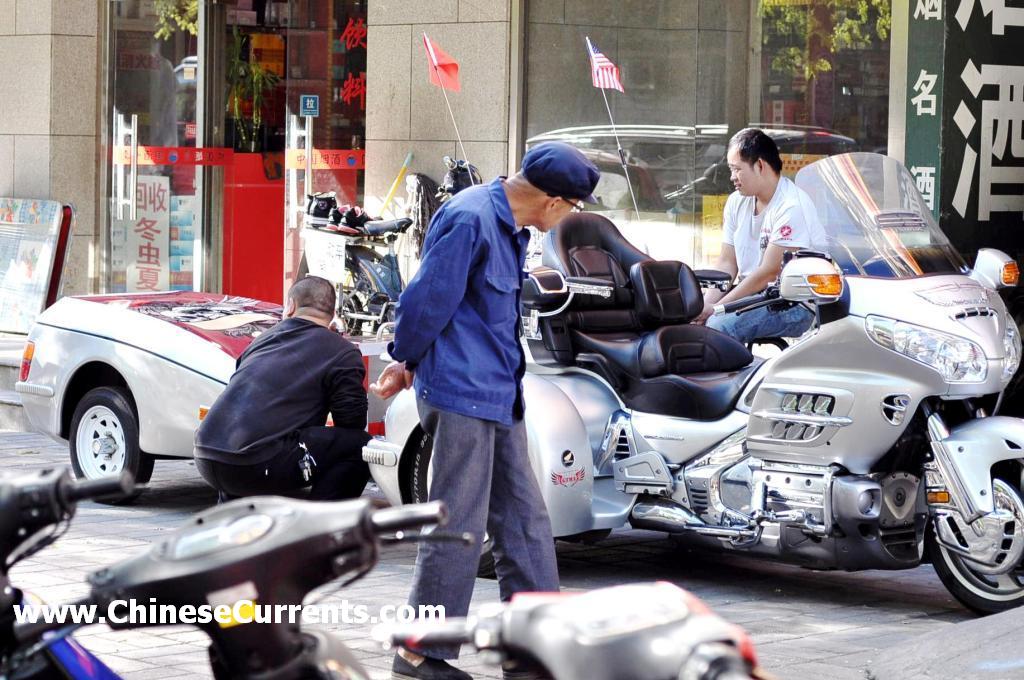
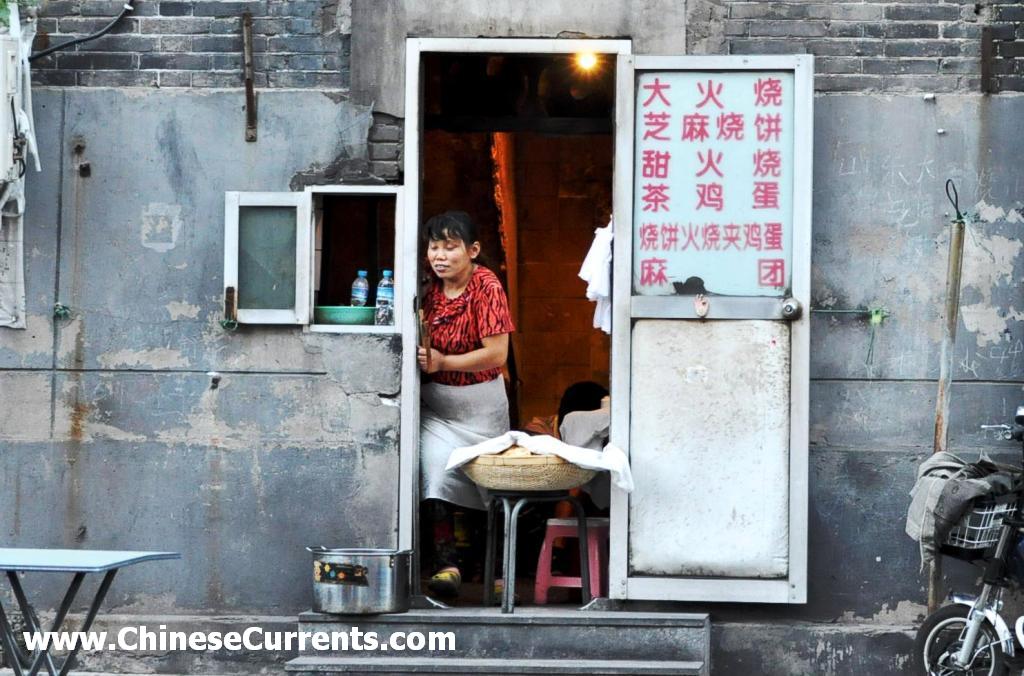
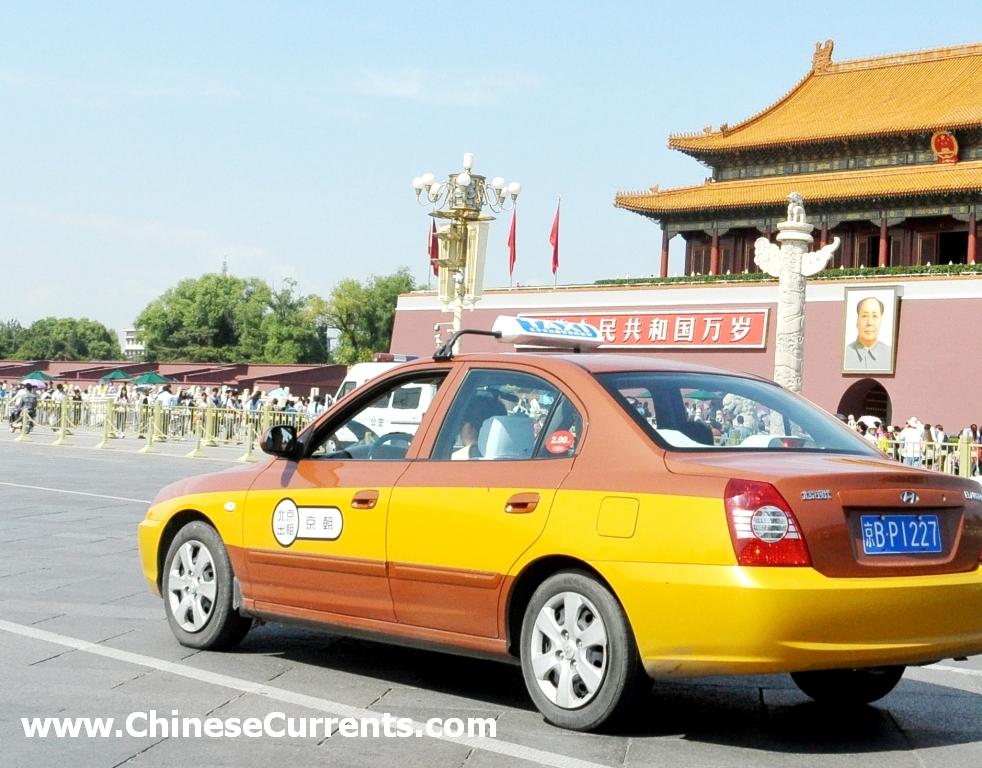
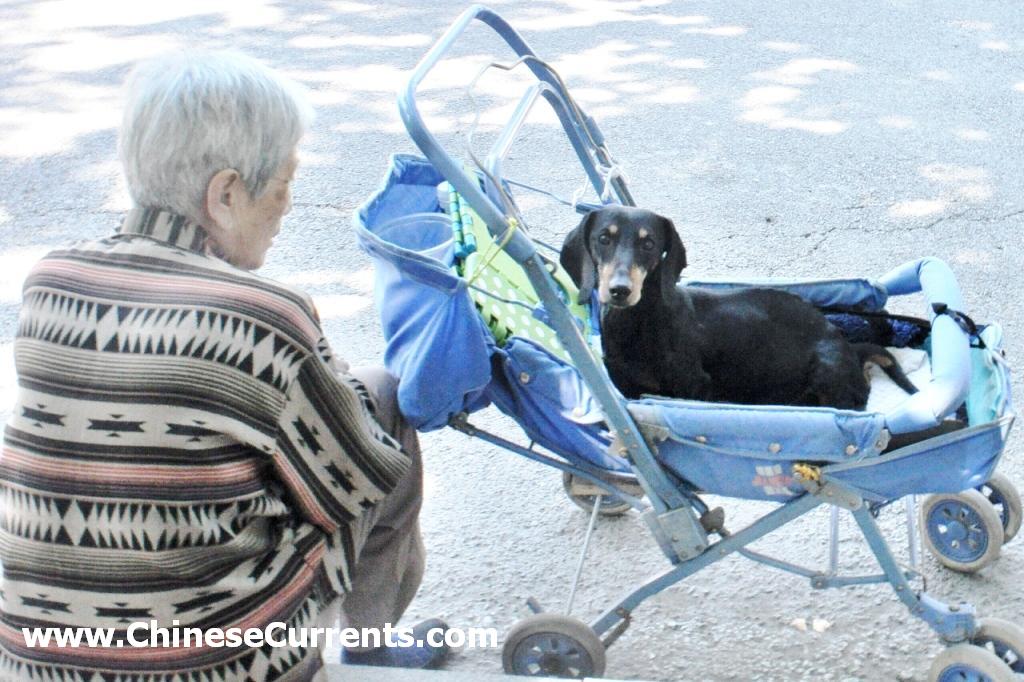
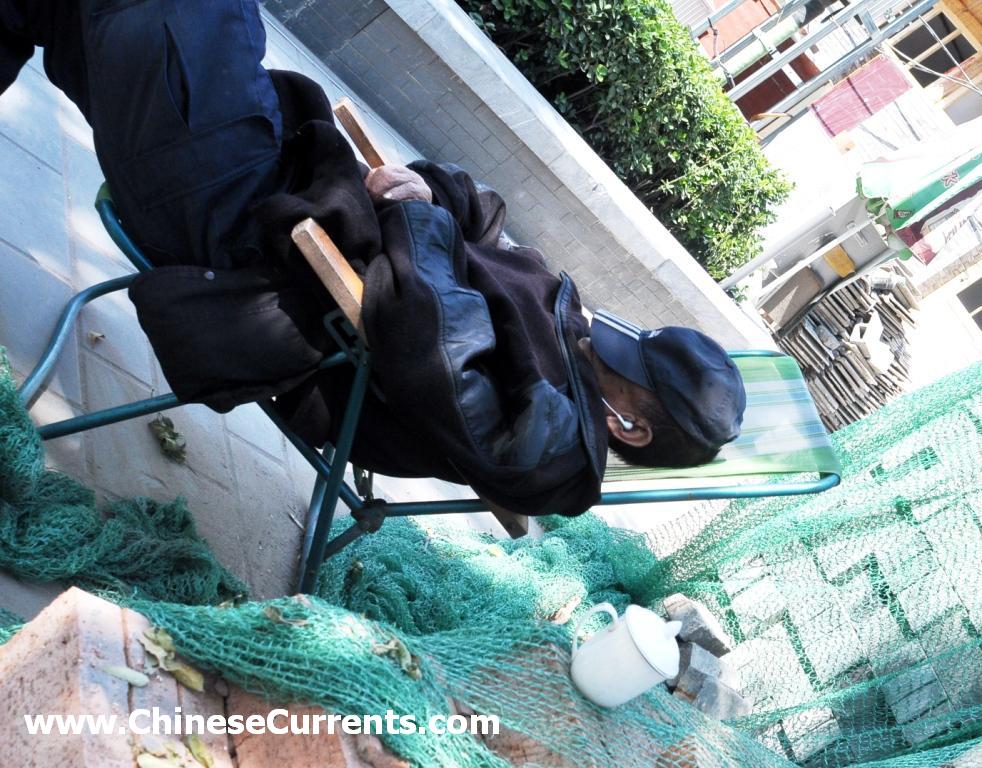
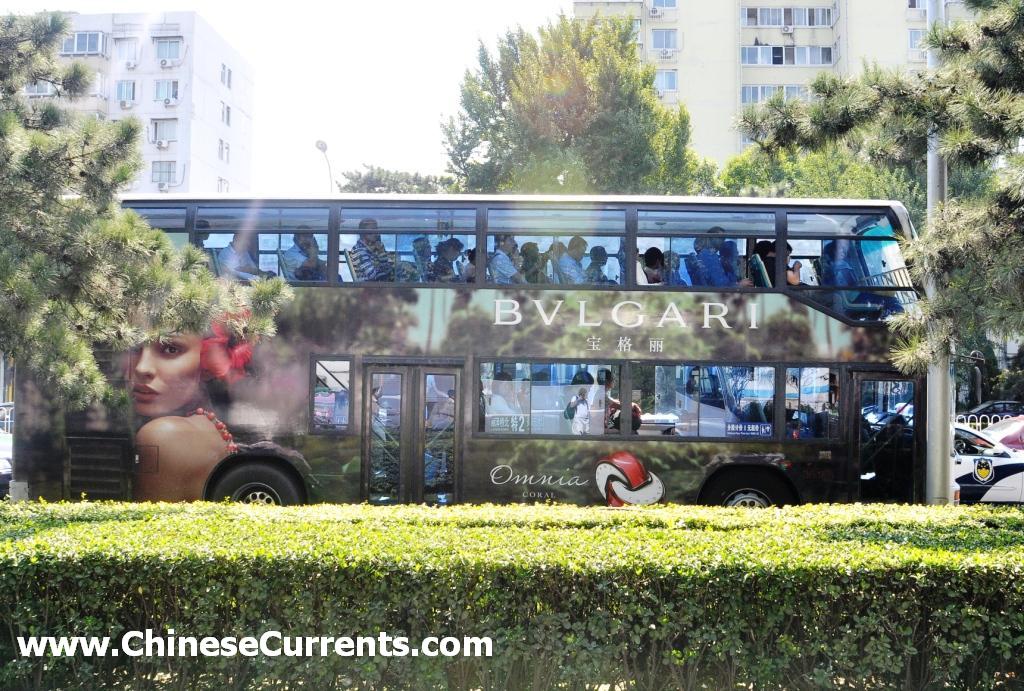
Cosntruction workers, Beijing Saturday, 15th September, 2012
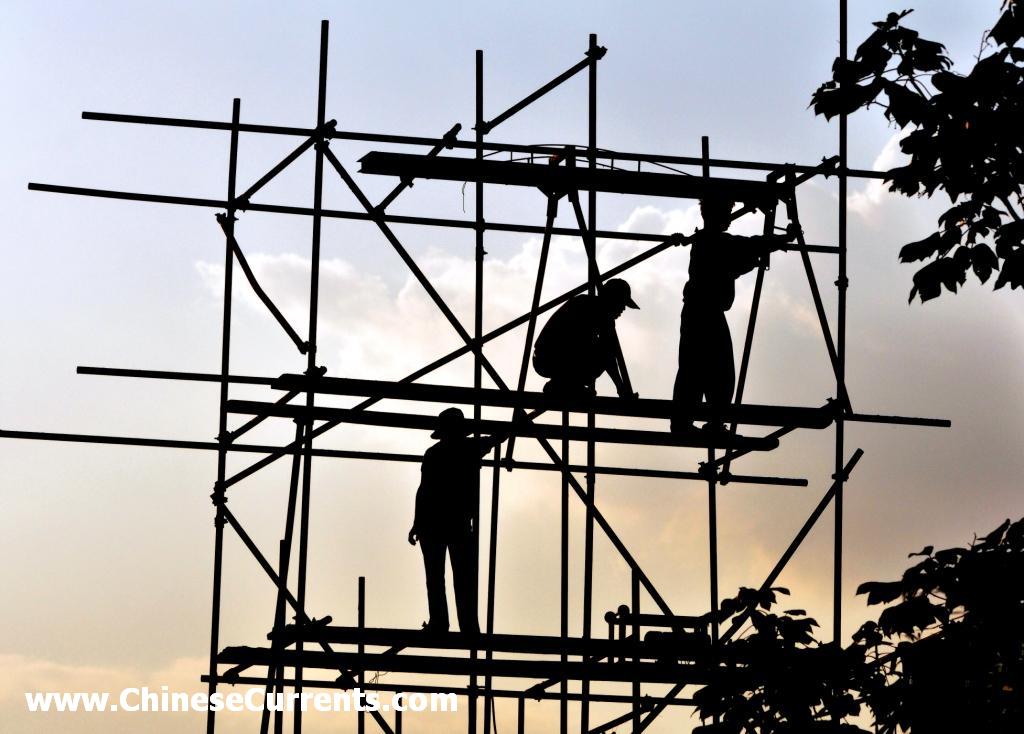
Horse power trumps pedal power Tuesday, 11th September, 2012
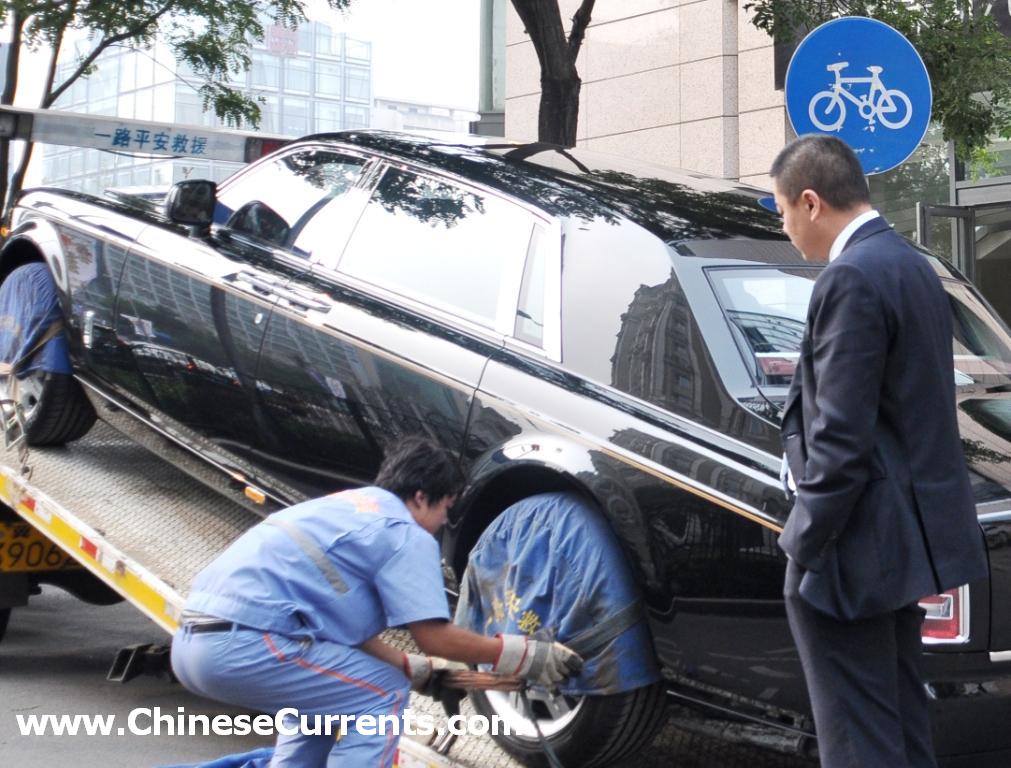
|
| Rolls Royce arrives in Beijing with zero delivery mileage |
Beijing snapshots 17th August to 5th September, 2012

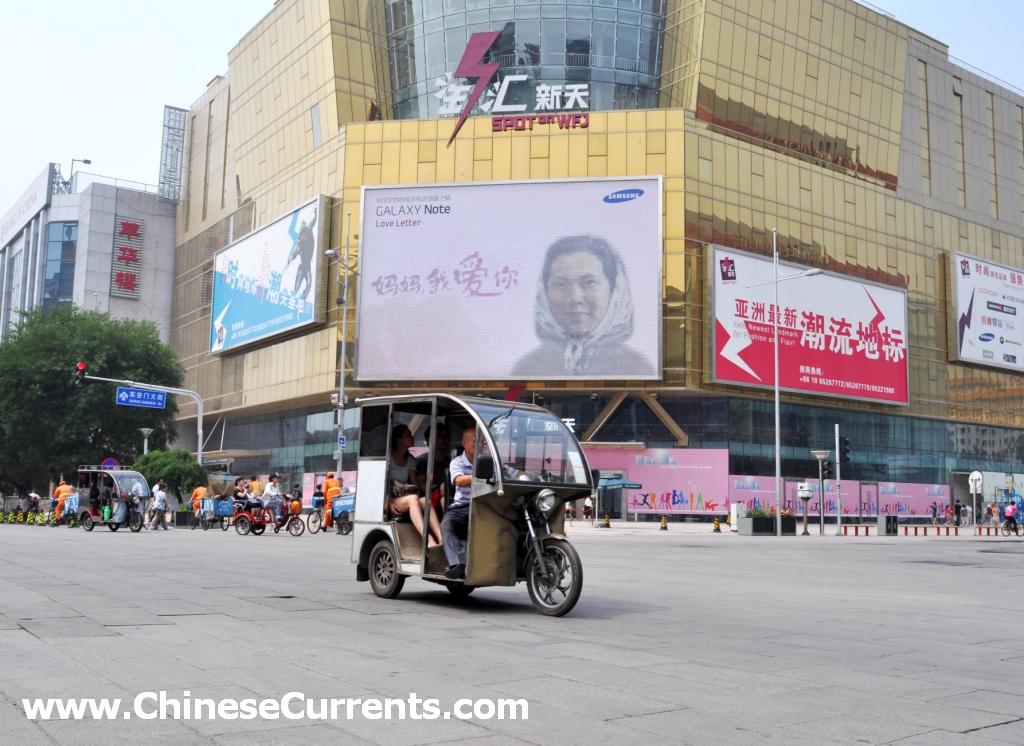
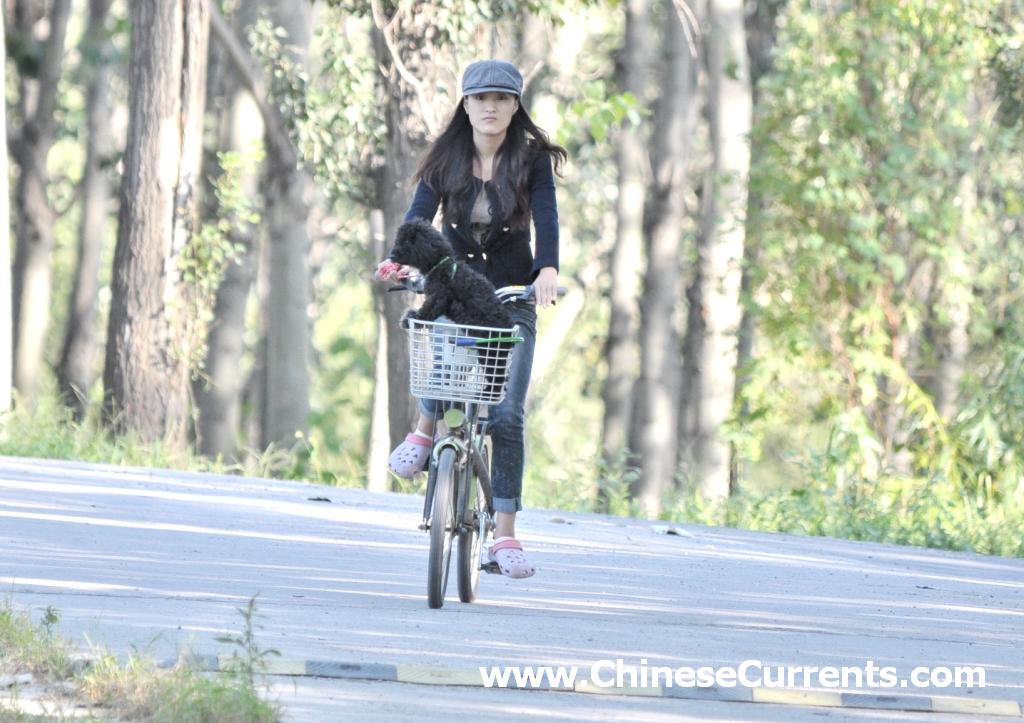
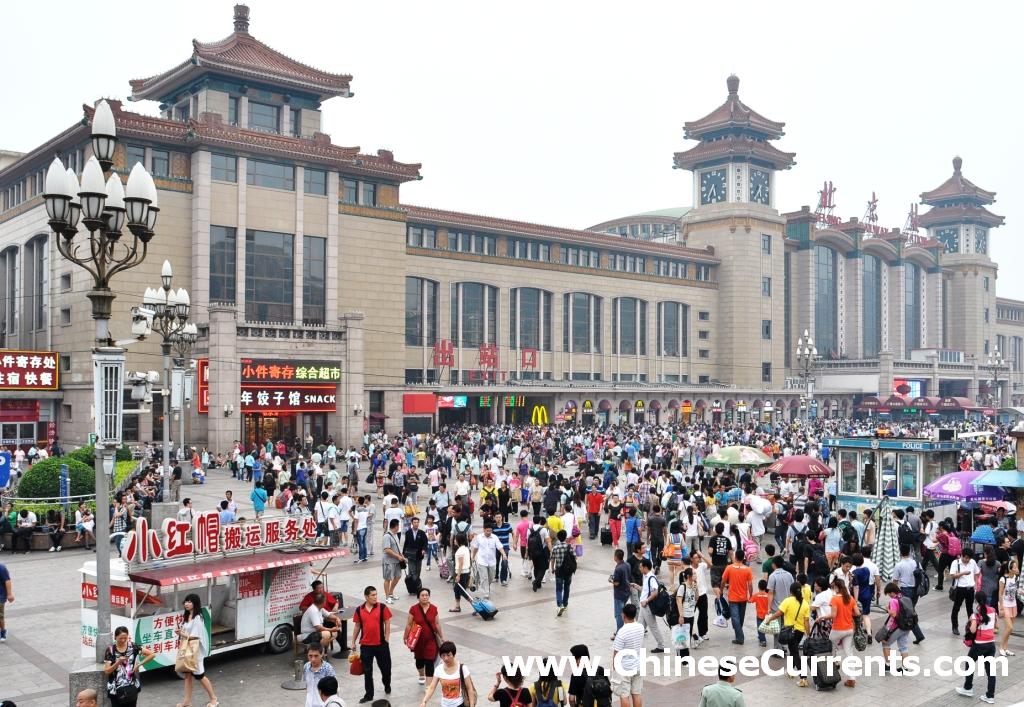
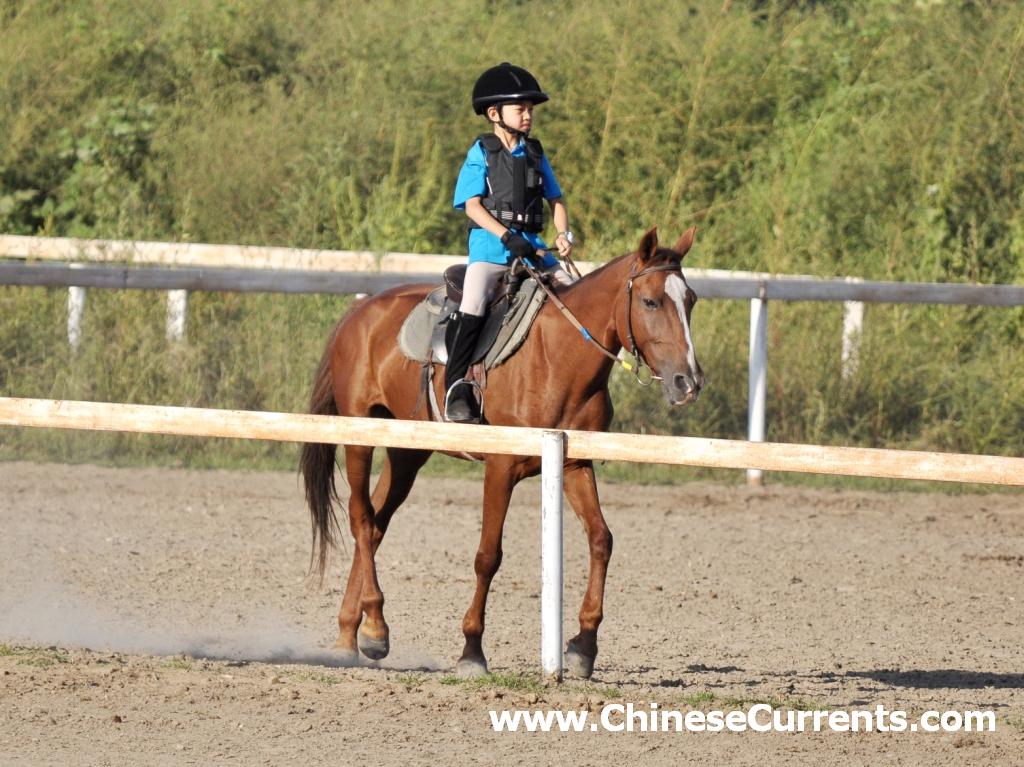
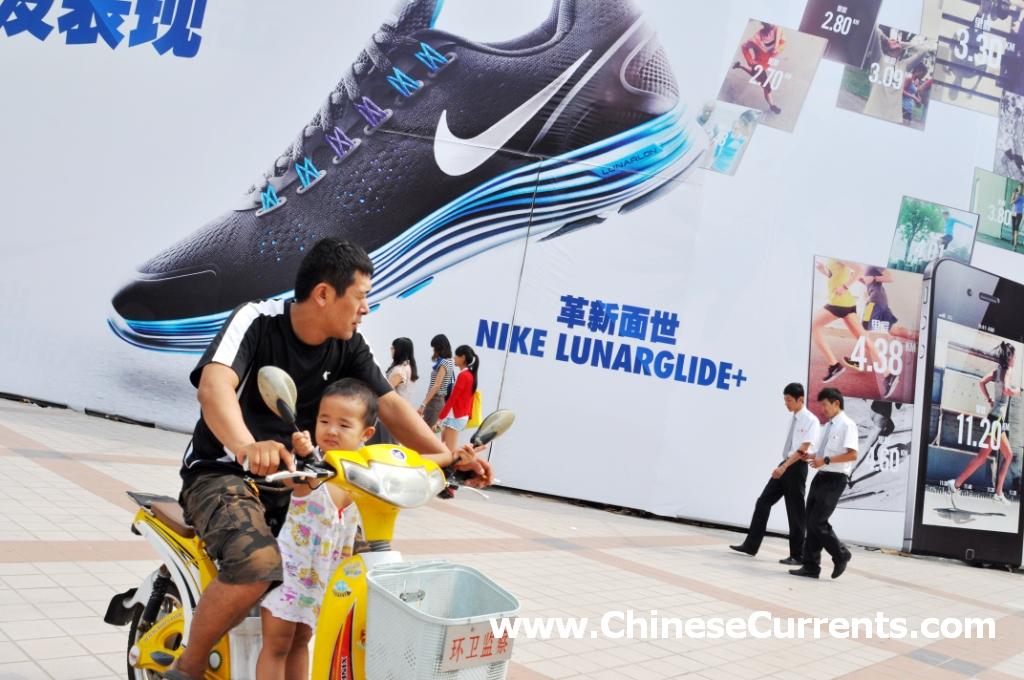
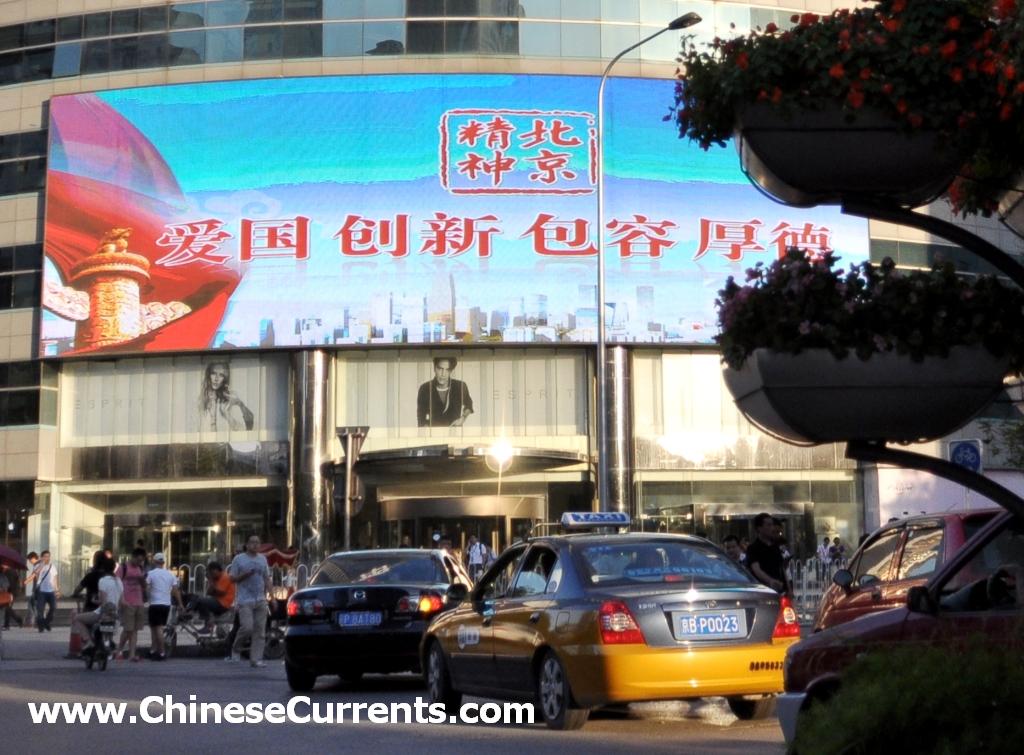

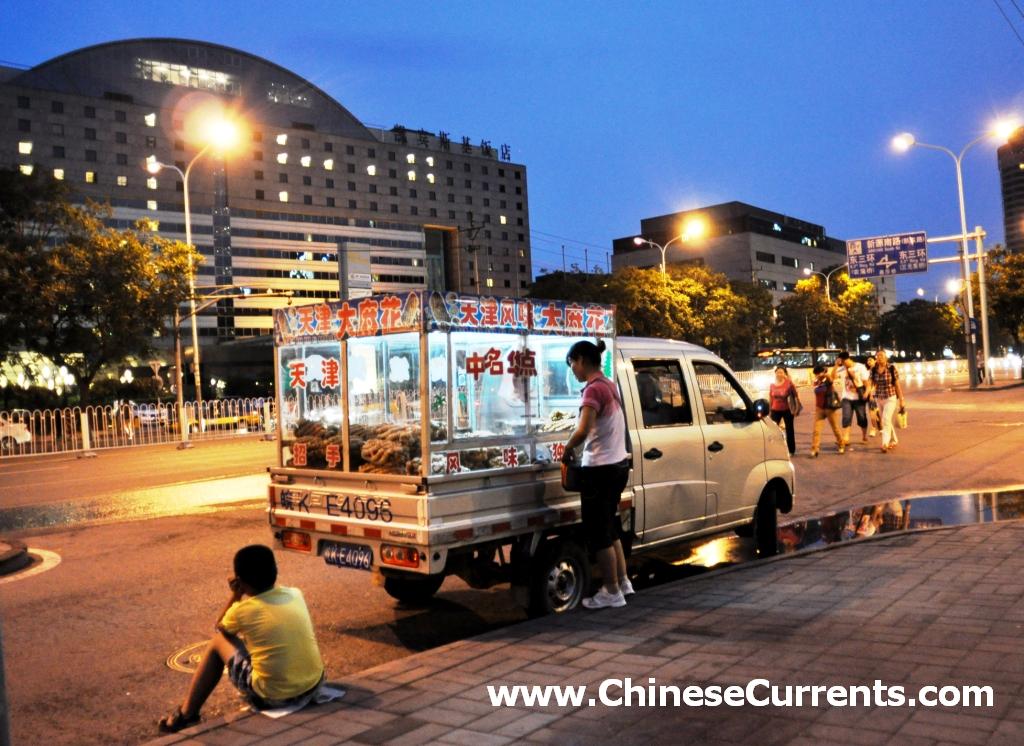
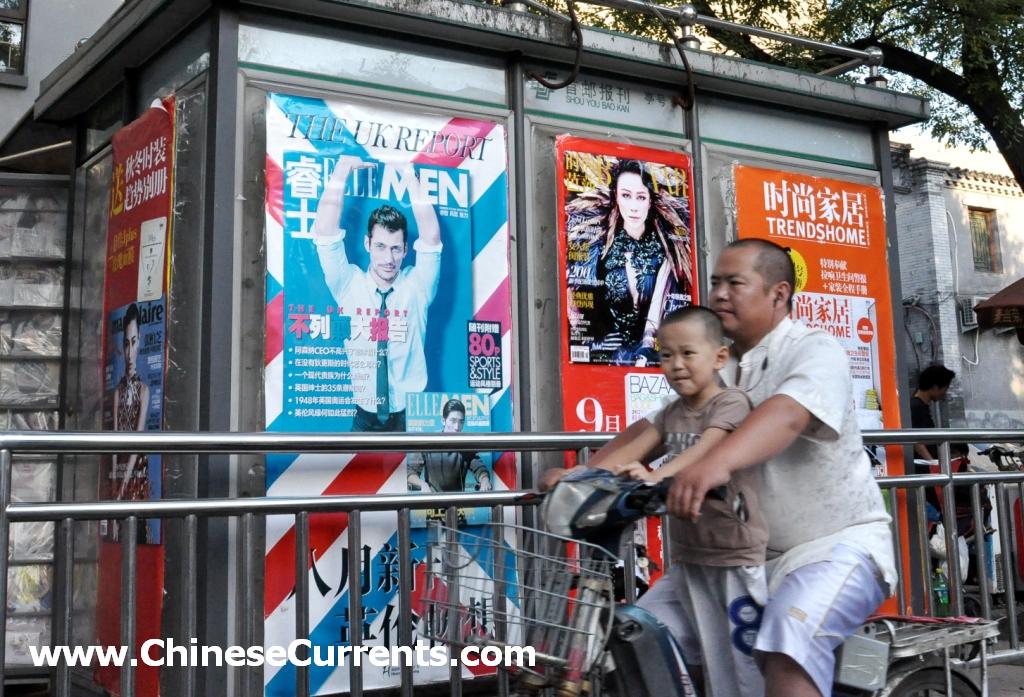

Wang Chen in Beijing Sunday, 3rd June, 2012

Chaoyang and Shunyi districts, Beijing Friday, 27th January, 2012
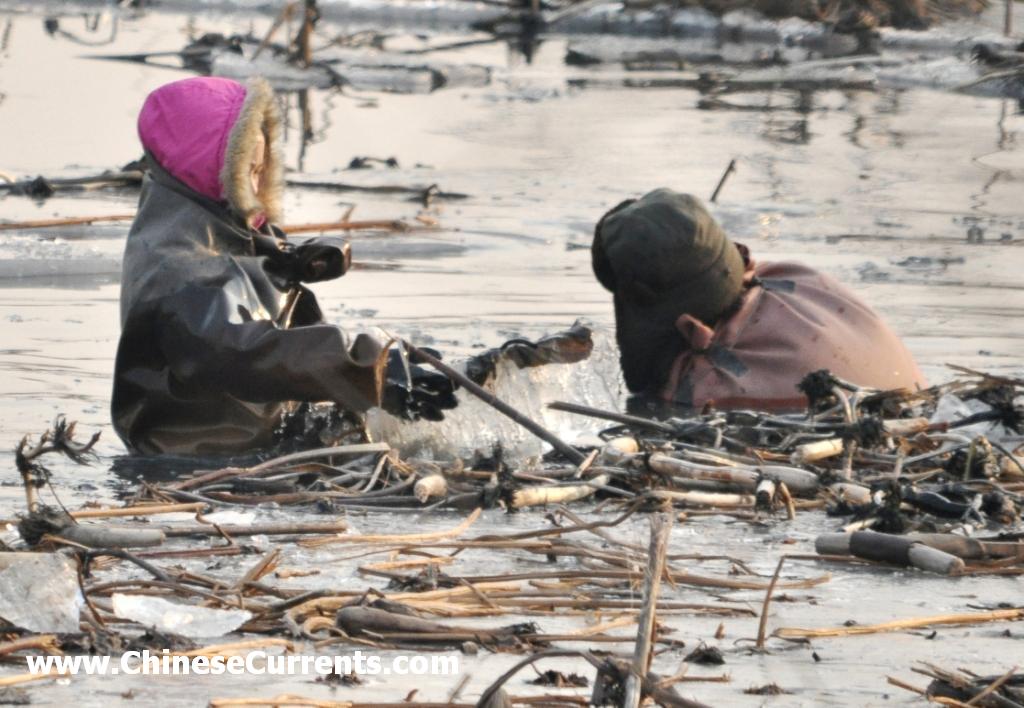
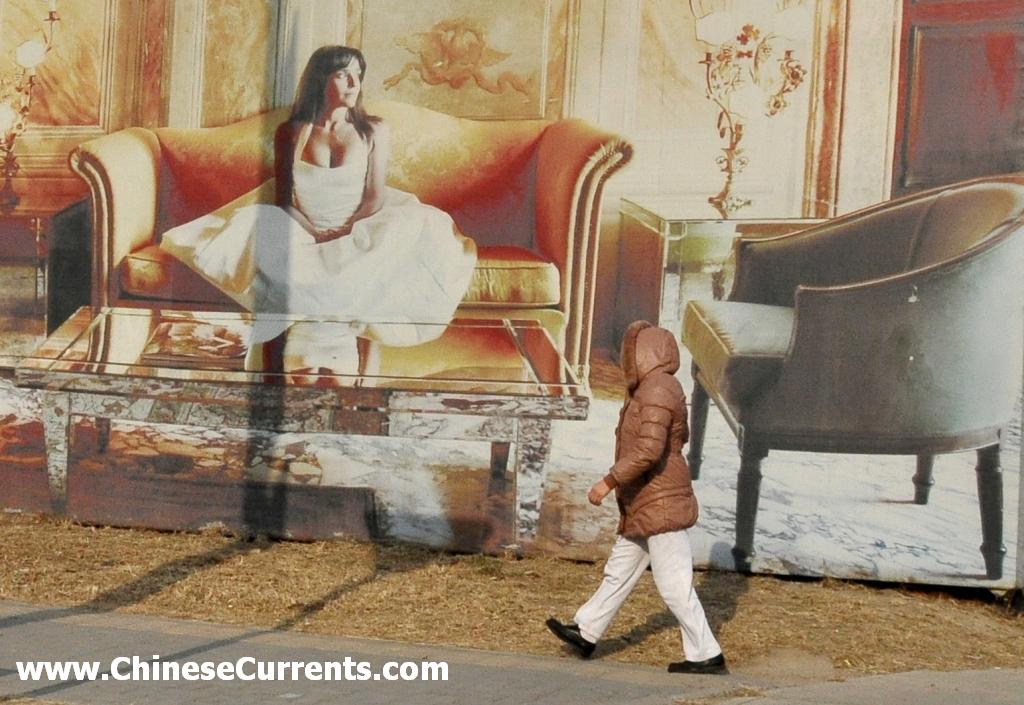
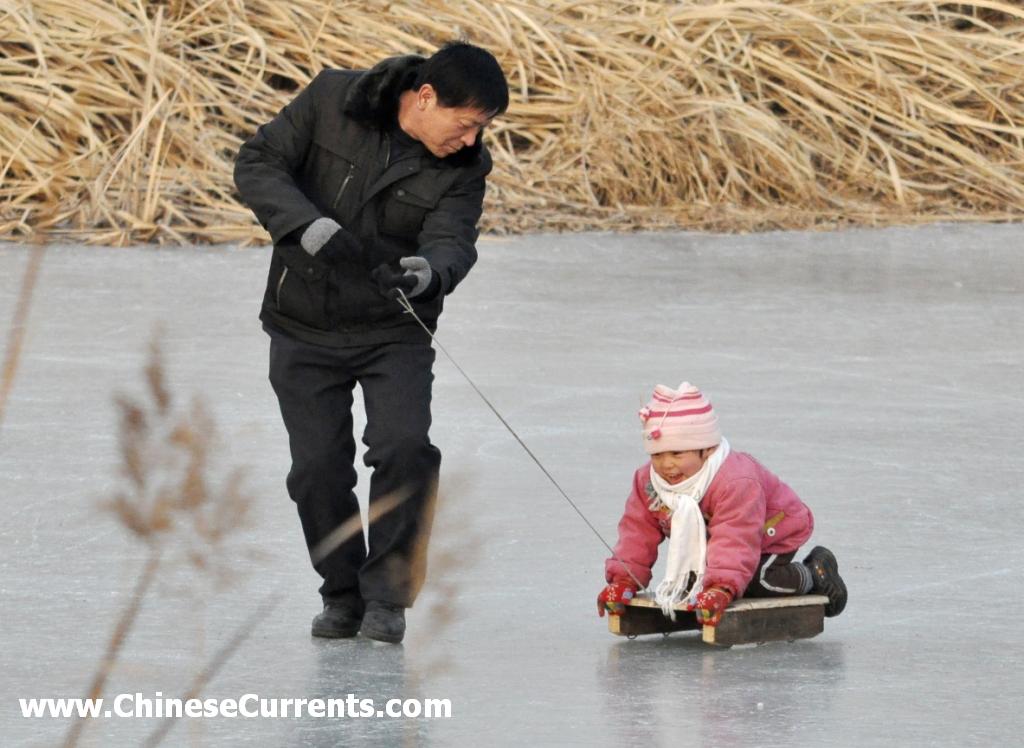
Beidaihe Snapshots Hebei province, Thursday, 26th January, 2012
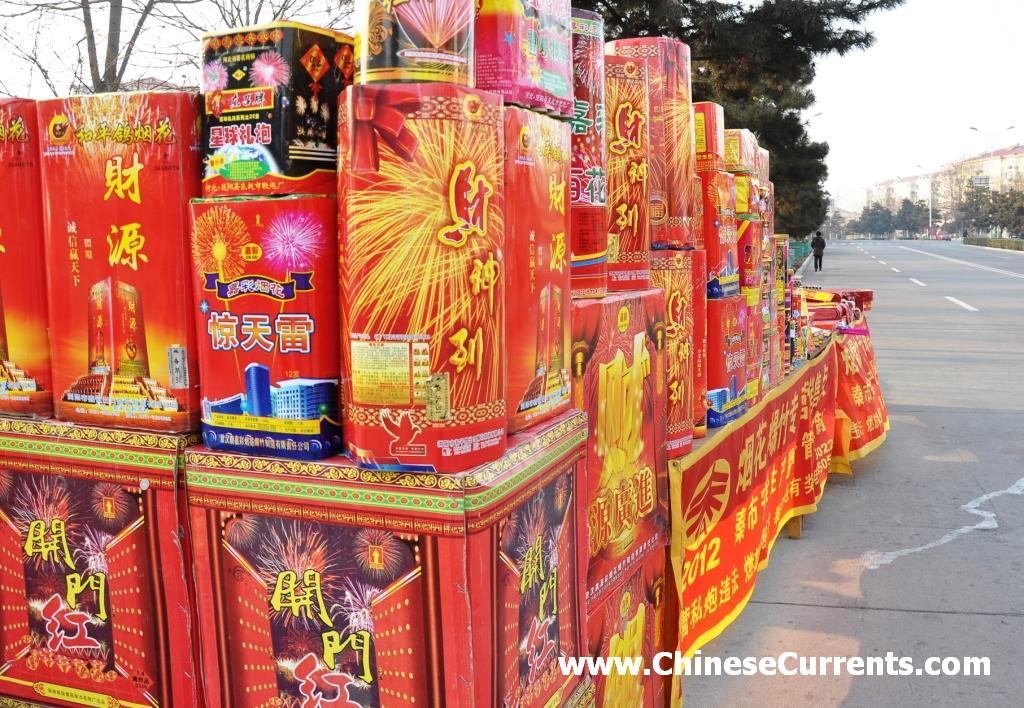
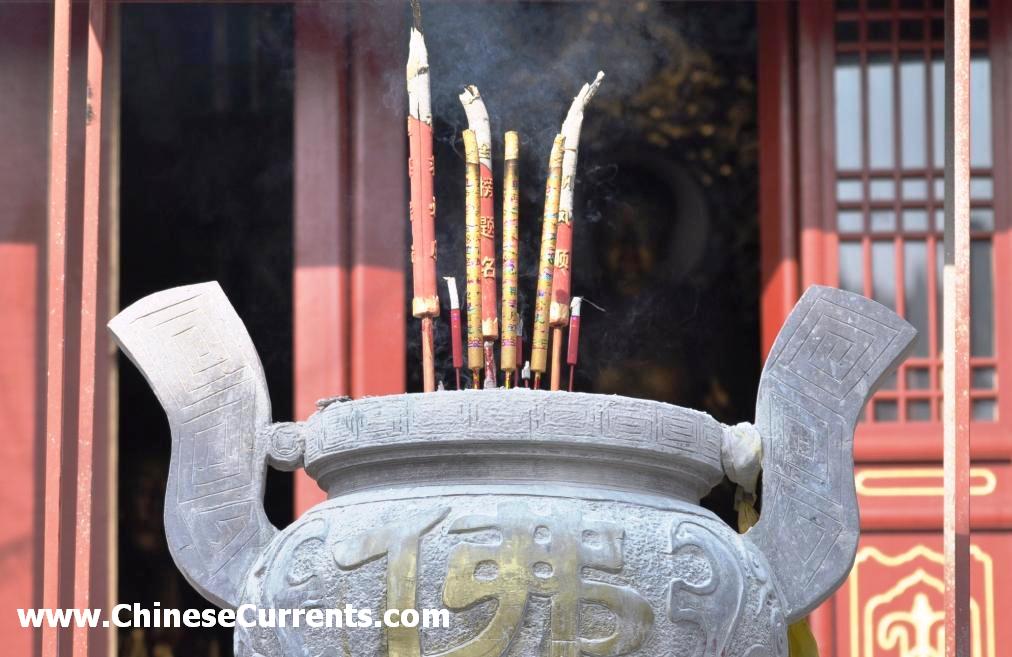
Qinhuangdao snapshots Hebei province, Wednesday, 25th January, 2012


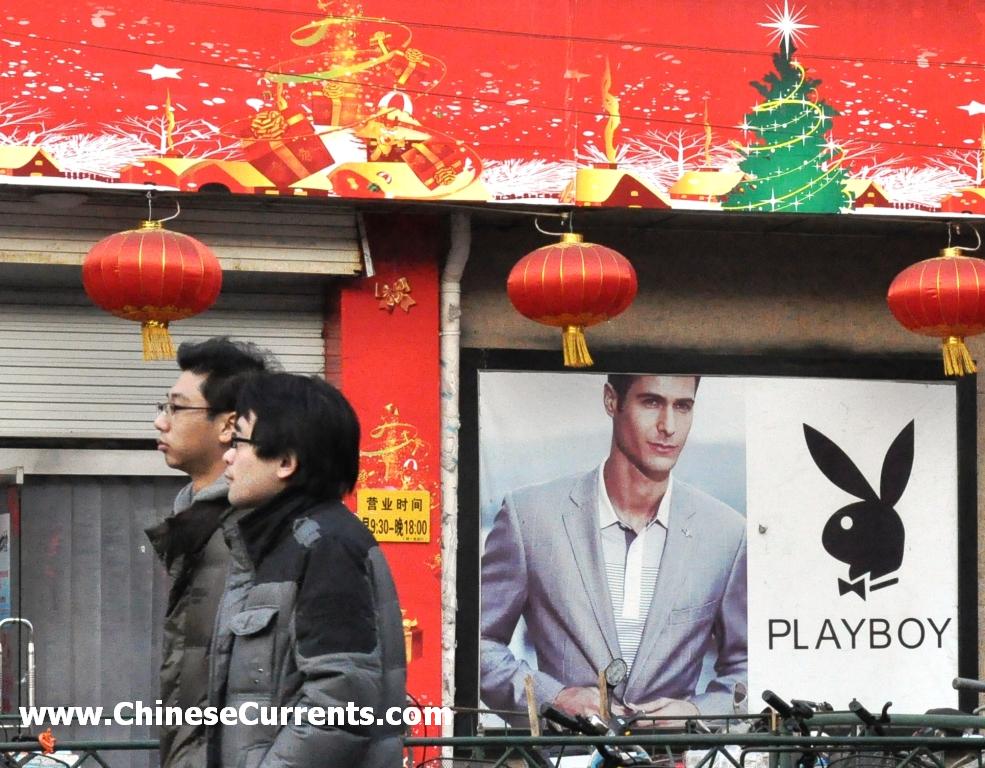
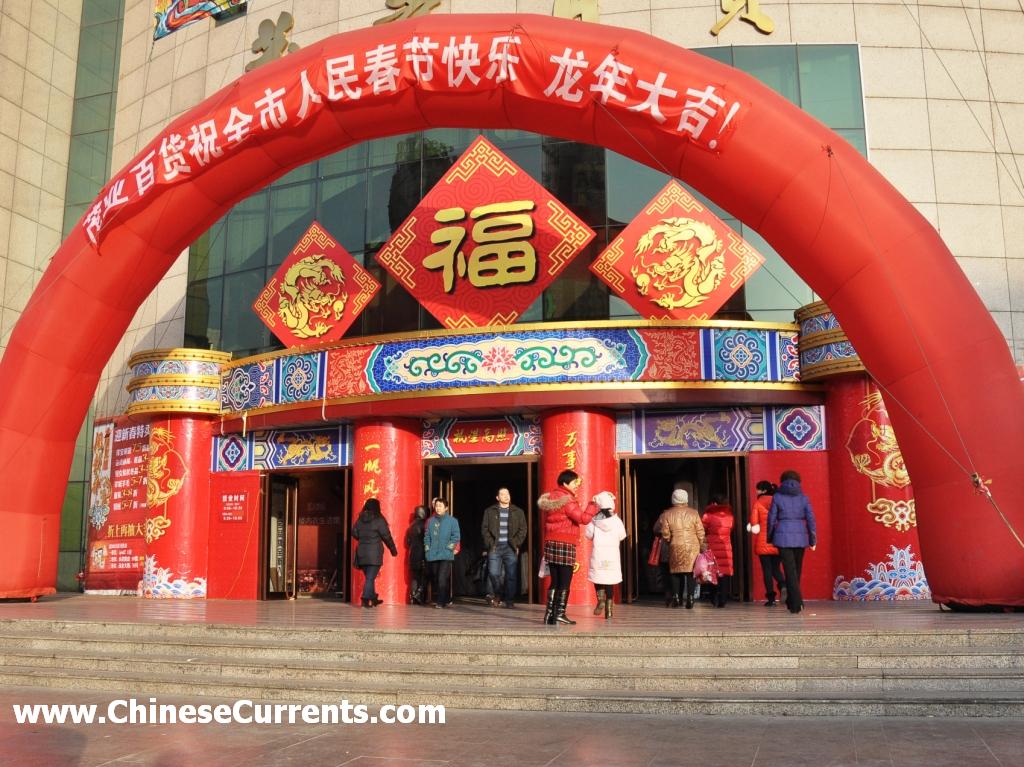

Qilihai snapshots Hebei province, Tuesday, 24th January, 2012
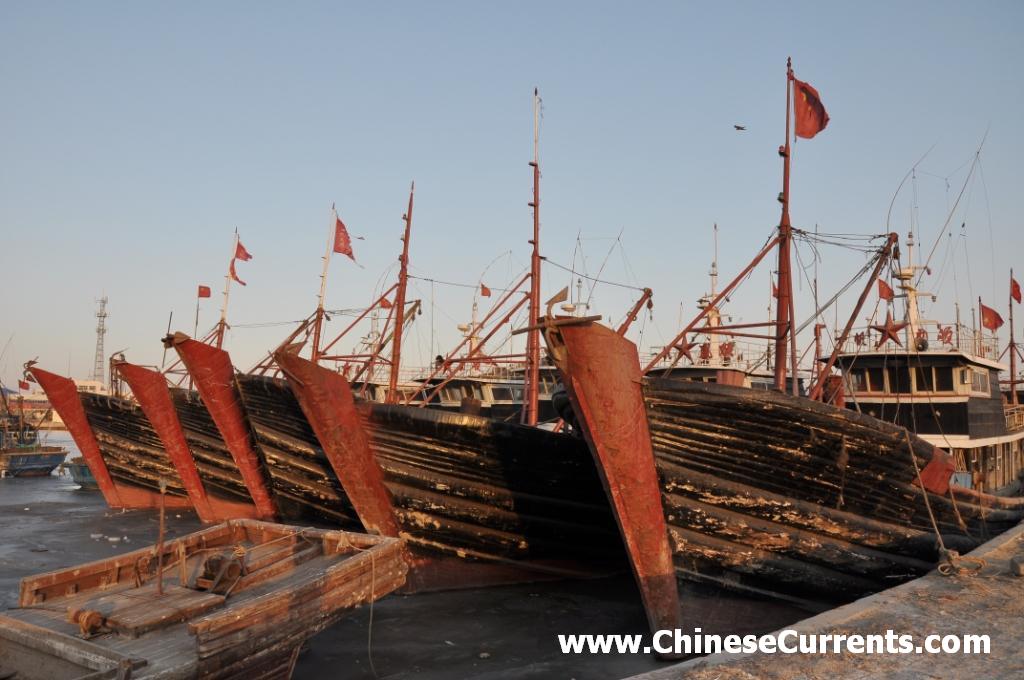
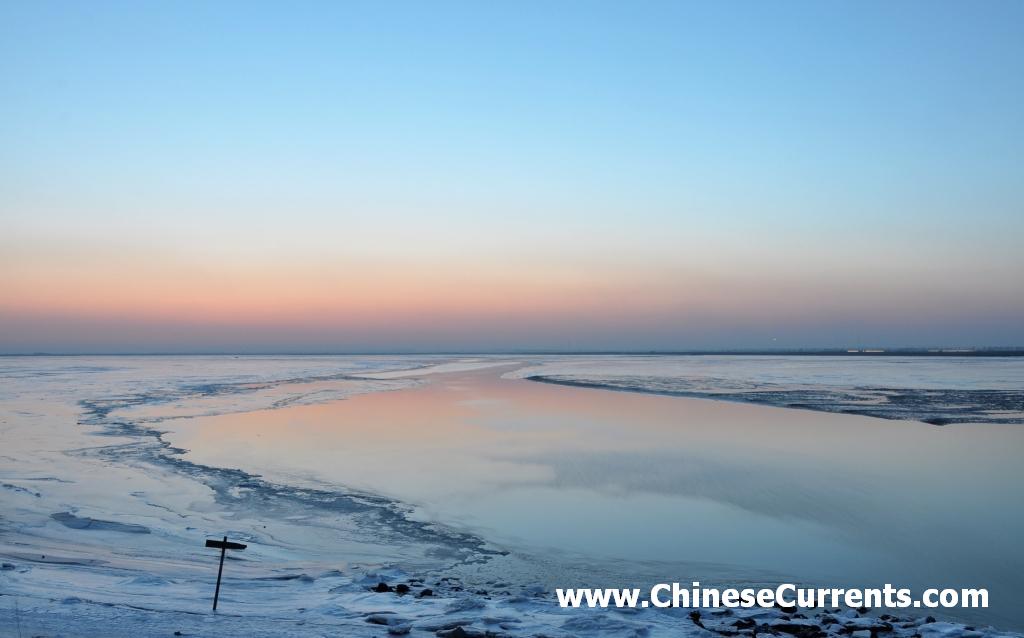
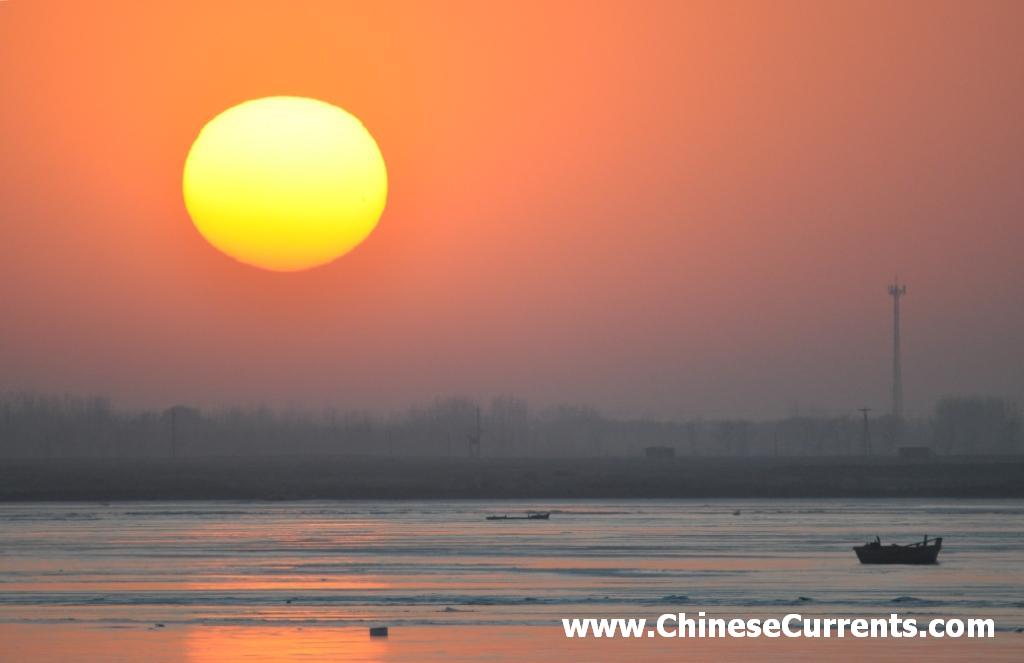
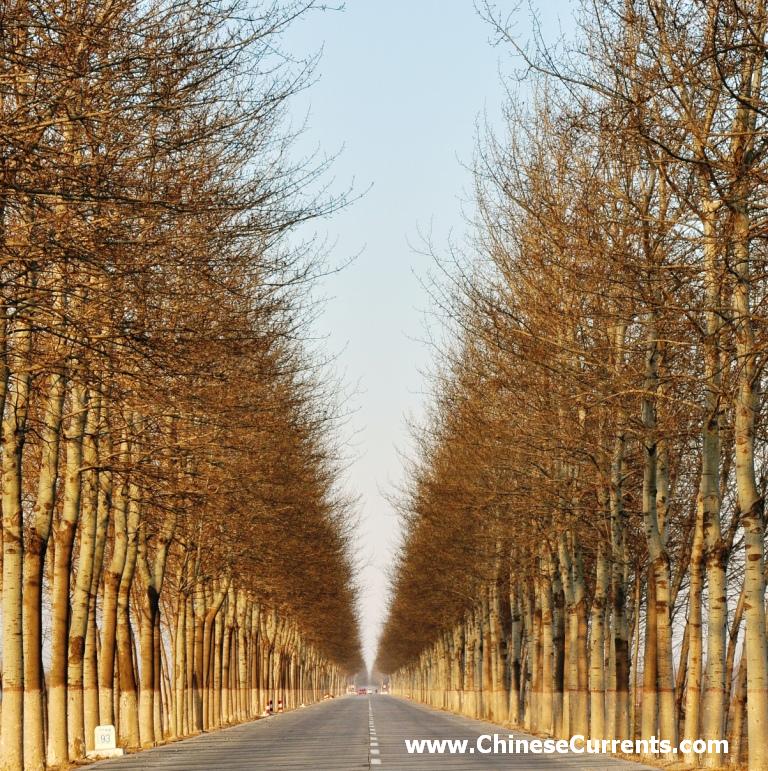
The Year of the Water Dragon, New
Year's Day Beidaihe, Hebei province; 23rd January, 2012
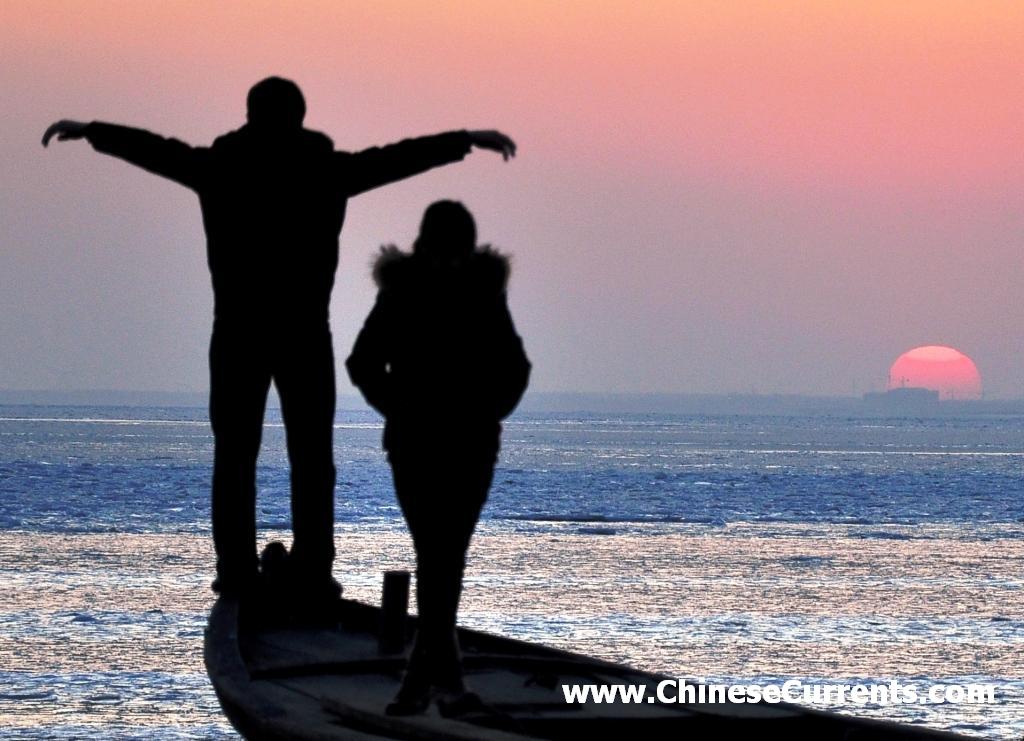
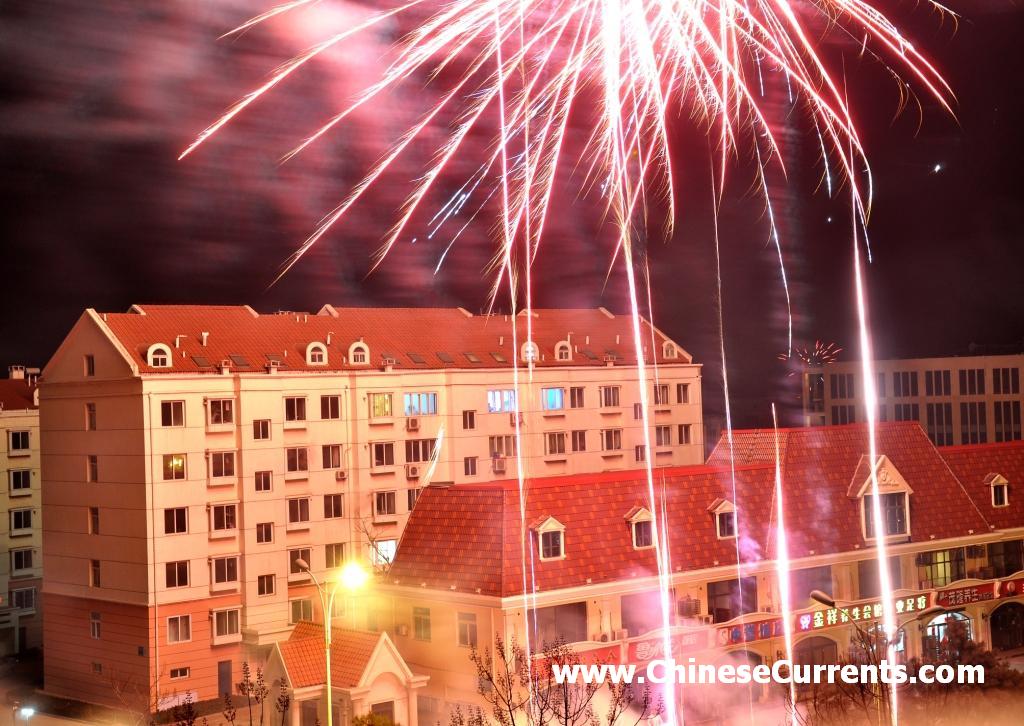
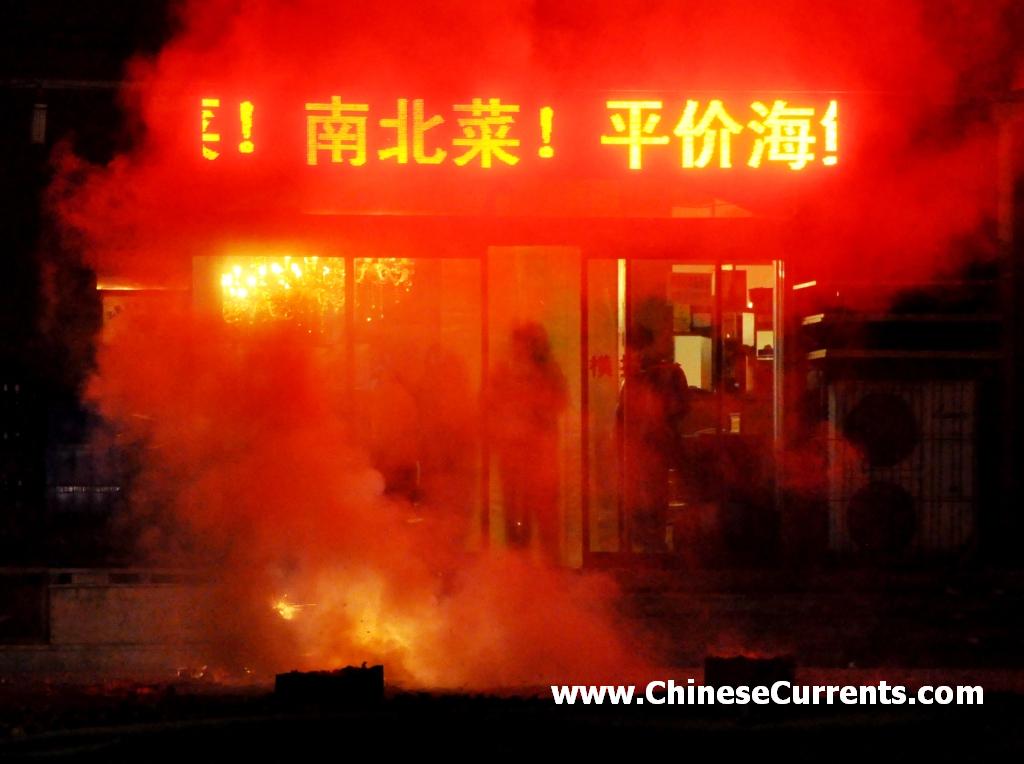
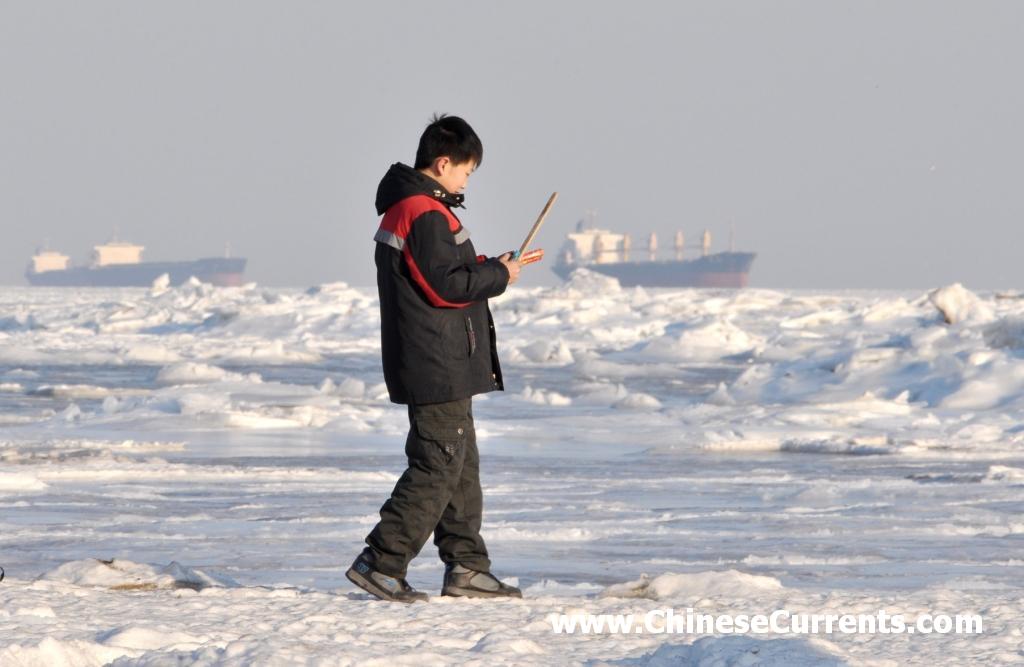
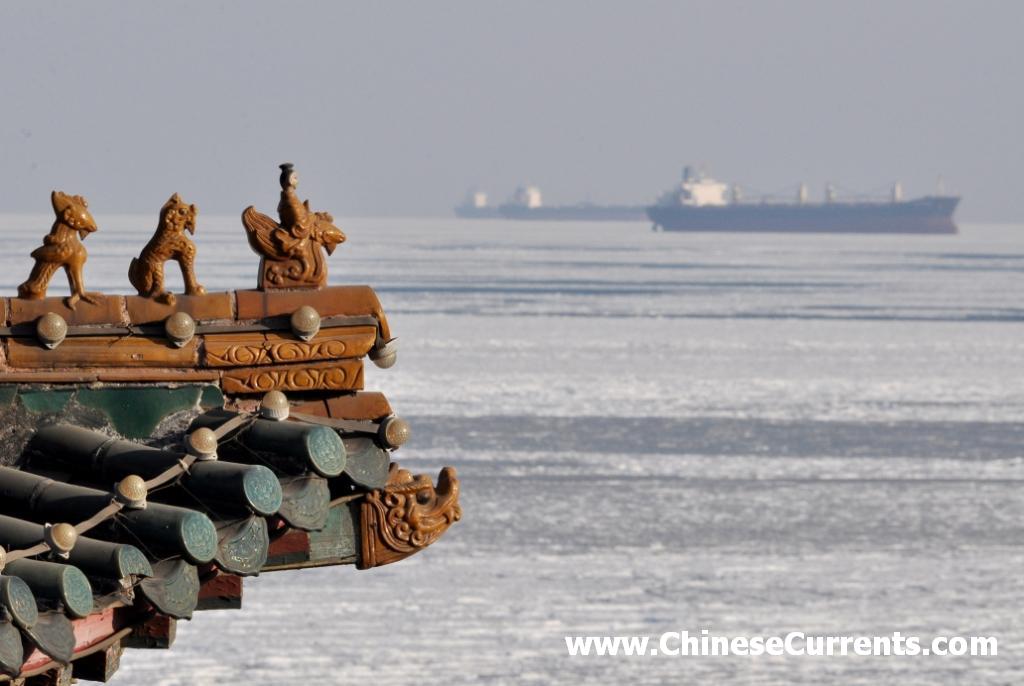
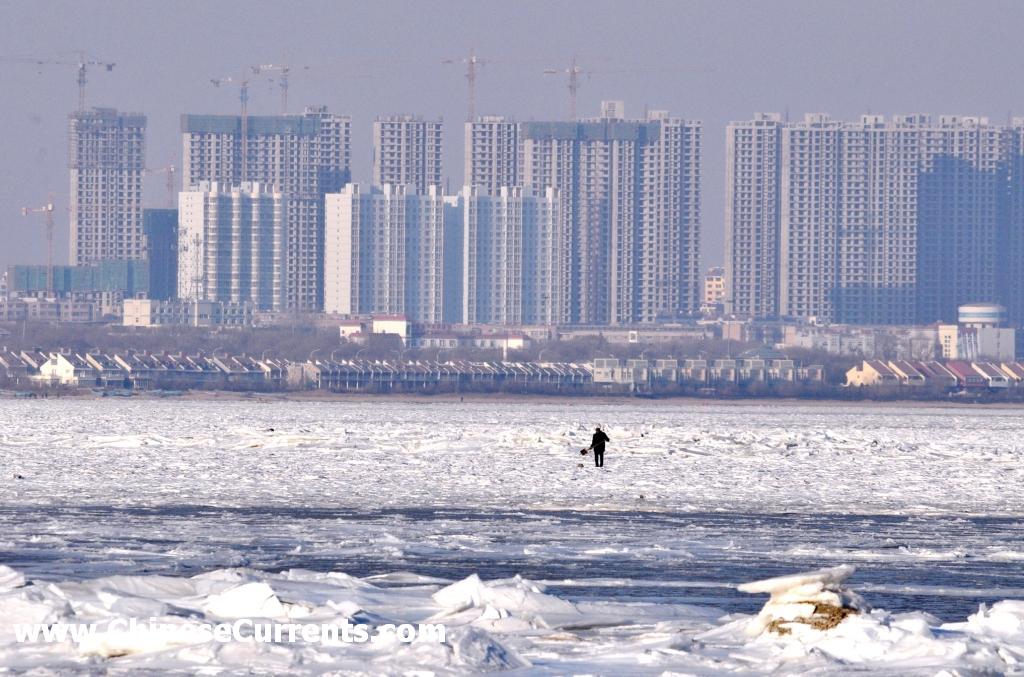
Finding Nemo Friday, 26th
October 2012
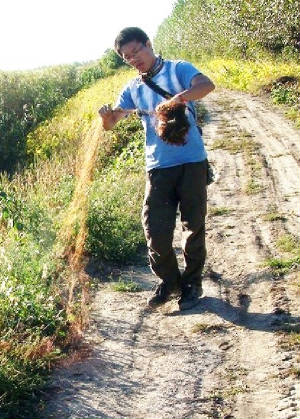
|
| Nemo... Inspiring a generation |
Many
years from now – at a point in time when the number of birds migrating through China is many, many millions more
than it is today; when membership of the CSPB (the China Society for the Protection of Birds) tops 10
million; and when every school in China has a birdwatching society – legions of older Chinese birdwatchers will
tell and re-tell the horror stories of the dark time when it wasn't like that. They
will tell the young ones of the time when, many years before, millions of migrant birds were slaughtered for their
meat or imprisoned in cages because of their beautiful plumage or melodious voice. They will tell
of the countless numbers of birds that were left to die in the trappers' nets because they were neither beautiful
nor edible. And they will talk of the time when not nearly enough people cared.
They will also recount the true story of how this began to change... and how
that became the story that inspired a generation of young people. Many
years from now, the school book "Protecting the
environment in China and how you can help" will tell of the events of the 15th
October 2012 and of the local heroes who, because of what happened on that date, were launched into the limelight to
become beacons of hope in what was a dark period for China's birds. This
is how the true story of what happened might be told: Guidong County was an out-of-the-way mountainous area in Hunan province. It
was a remote, backward place. It was also a lawless place. The
[Chinese] adage that "The mountains are high and the emperor is far away" was as true in Guidong in 2012 as
it was when the maxim was coined, a thousand years before. Hundreds of people in Guidong had guns (despite
this being a serious crime). Hunting parties of up to 200 would go out at night using high-power search lights
to lure huge numbers of migrating birds, which they mercilessly shot. This had been going on
for years. Everyone in Guidong, including
the local police and authorities, knew this was happening. But nothing had been done about it. Until,
that is, a very brave reporter from the Changsha Evening News, the provincial capital's most popular newspaper, went to Guidong
to expose the criminality there. In several visits, Li Feng infiltrated the hunters' ring and compiled
the evidence that would be the catalyst that changed attitudes. He secretly filmed the hunters at their "safe
houses", the night-time shooting parties, and also filmed the traders selling the carcasses of the shot birds in
local markets. In Guidong, the market price of a bird was determined by the length of the
bird's neck and by the taste of its meat. Xinhua [China's official news agency] reported that: "Birds with long necks, such as egrets and herons, sold for between 10 [US$1.60] and 70 yuan,
while short-necked eagles and owls are priced at hundreds of yuan as the taste of their meat is preferred." Xinhua
also reported that in the counties of Guidong, Xinhua and Xinshao, hunting parties from one village alone could kill,”150 tonnes of wild birds a year". The local hunting parties also included rich people from outside the area who would
pay a lot of money to shoot herons, egrets, owls, and eagles and "...Come
in luxury limousines with beauties and beers, taking it as an aristocratic pastime, which has become a troublesome fashion" [Xinhua
reported, citing Mr Yang, a local forestry worker]. In the autumn migration of 2012, Li Feng, a local-hero journalist risked his life to shoot
the video that exposed the gunmen's evil deeds. The video also pointed the finger at the corrupt
local police and officials who allowed this to happen under their noses. The video first ran locally in Hunan.
The people who saw it were outraged. So much so that they told others about it. In turn, these people passed on the link to their friends and contacts.
The ever vigilant TV networks, realising that this was becoming a big story, began screening the video locally (in dozens
of different places). By the end of the 14th October, many thousands of people had seen the video. Then,
on October 15th, there was a tipping point. During that day, interest in the story reached critical mass... and
the social media version of a reactor meltdown was unleashed. Interest
in the story exploded with such incredible ferocity that, by the end of that day, millions of people had seen the video or
read about the atrocities that had been perpetrated in Hunan province. The public was horrified and very, very
angry. One blogger, a Ms Liang, wrote on Sina Weibo, "How could this happen??!! We should be ashamed!! The corrupt officials who let them [the
gunmen] get away with it must be severely punished!!" In the days following this news peak, more and more influential news agencies published
their condemnation of not just the slaughter, but also the local authorities' complicity. The
China Daily released a hard-hitting opinion piece (that had first appeared in the Beijing News), which summed up
the problem and the solution: "The
truth is that local forestry officials and police are shirking responsibility, because they can stop the brutal killing of
birds if they strengthen joint law enforcement. For a change, they can stop the selling and buying of migratory birds in local
markets, and impose heavy fines on people indulging in such activities".

|
| Stop!! In the name of love [of birds] |
In the following two weeks, hundreds of news articles about the suffering inflicted
on wild birds all across China were published [before that, there had been only a handful written every year].
Then, gradually, the focus of the media's attention shifted from the problem to the solution... to the urgent need to
protect China's birds. That's when the news agencies began
to appreciate the importance of people like Nemo, who had been doing something about the problem for a long time [but
had, until then, not received any recognition from the media because bird protection had not been a "hot"
topic]. Some very big news agencies began to take an interest in
Nemo and what he and his 20 strong group of friends were doing in Tianjin. This band of brothers [and quite a few
sisters] from universities in Tianjin, had decided enough was enough, and had made it their business to destroy
any nets they found while they were out watching birds around the local lakes and marshes. One of Nemo's friends, Mr Ma [famous in birdwatching circles for having wrestled guns away from hunters],
helped to organise the raids with military precision. This fearless group of bird-protectors donned wading boots and splashed
into the marsh with their flag held high [see the photo below]. After a lot of hard work, the local heroes marched
out again with hundreds of metres of illegal nets, which they later burnt. They also managed to release at least
one bird from the net that would otherwise have died. A very influential
editor from a famous national news bureau, who had already been very supportive of the cause [by publishing a number
of articles in a bid to defend China's birds] pledged his support for the students from Tianjin and their principled
stand against the forces of evil. He also worked hard to persuade his network of editors and reporters of other
high-profile news agencies that the issues surrounding the protection of wild birds was something that deserved far more column-inches
and TV coverage. This media activity created a second wave
of interest that kept the issue front-of-mind on the weibos [China's Twitter-like social network sites that
have hundreds of millions of active users]. The virtuous
cycle [of news stories generating comment in social media, which in turn makes more national and local news agencies more
likely to cover the story and, consequently, provokes more people to tweet and re-tweet about it... and so on and so forth]
had now gathered even greater force. To the extent that, all across China, provincial and local media companies began to realise the importance of finding their very own Nemo. The rest, as they say, is history.
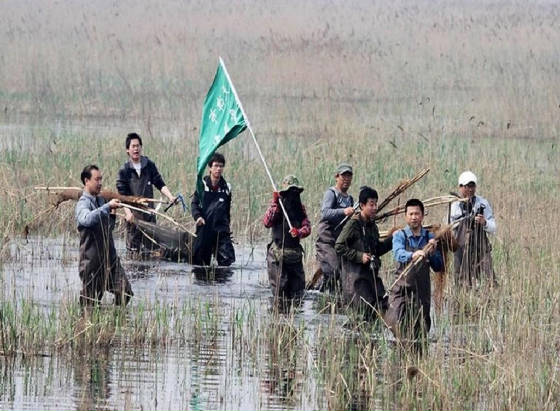
|
| Local heroes. Please click on the photo to see more photos of them. |
The medium, the message, and the sausage dog Friday, 19th October 2012

|
| Sausage dog or badger hunter... what say you? |
Every so often, while wandering around Beijing (or any place for that matter)
you see something that just doesn't add up. Recent examples that spring to mind include: a Rolls-Royce in a cycle
lane; a washing line of clothes forming a "living art" extension to a graffiti-covered wall of a
soon-to-be-demolished house [photo here]; and a sausage dog sitting in a toddler's push chair. At first glance, the dog looked ridiculously out of place. But the more I looked at it the
more it seemed to belong there. If a thought bubble were etched into the photograph, it would say something like, "Why
are you laughing?", not "I know... this is really embarrassing." The funny thing is that, up until I had seen the dog in the push chair, I had not used or thought about
"sausage dog" for decades. On the few occasions I've had to describe one, I've always referred to it
as a "dachshund"; which is of course a name that has far more street cred than sausage dog. The
German name evokes something that is seriously business-like and which shouldn't be messed around with.
Appropriately so, because dachs is German for badger.
So the dachshund is literally the "badger hound". In other words, it was a dog that went
where other dogs feared to go. No hole was foreboding. It just went in... and invariably dragged
out the much bigger, striped occupant of the hole in its vice-like jaws. It's bravery, ferocity and tenacity as
a badger hunter was the stuff that tales around the camp fire were made of. A strapping six-footer would walk with
pride with his badger hound at his side. So, what went wrong?
At what point did the Dachshund brand disappear down the wrong hole?
The answer lies in the power of a medium and the vulnerability
of its message. In World War 1, American and British owners
of dachshunds were under the cosh. The hapless dachshund was being torn to shreds in the medium of political cartoons, in which
its image was used as a metaphor for all things German. Unluckily for the breed, Kaiser Wilhelm II had
a pair of dachshunds. In an early validation of the adage that an owner and dog have similar characters, the Kaiser chose
Wadl and Hexl to be his pets. The two dachshunds had
a particularly mean streak and, presumably growing tired of badgering badgers, they attacked and killed a precious golden
pheasant [all the way from western China I hasten to add] that belonged to Archduke Franz Ferdinand, while on
one of their master's state visits. After the Archduke
had been dispatched to join his beloved pheasant and war eventually broke out, the dachshund's image was so
derided that many fearful owners renamed the breed "liberty hounds" (at the same time, sauerkraut was rechristened "liberty
cabbage"). The satirical attacks on the breed continued into World
War II (Field Marshall Rommel was an infamous owner). In
the 1950s, Pablo Picasso's beloved dachshund, "Lump", helped to put the breed back into the public's good books,
but his minimalist sketch of Lump depicted a body so stretched that it contributed to the emasculation of the
once-proud badger hunter. Later, Andy Warhol's companion
(and spokesperson), Archie the sausage dog, would further increase the perceived quirkiness of the breed and its owners.
The final nail in the coffin of the "badger hound" came in 1993 when Paul de Vries and Murray Weinstock
released a song with the chorus: Dachsie,
meine dachsie,
The best canine under the sun,
Call you "wiener" or "sausage" or "hotdog",
We know that you're number one. Thankfully
I missed that song; and when Warhol was painting Archie, I was more into pop music than pop art. When Lump was
around I wasn't even born. Despite my lack of exposure to these messages I, too, called them "sausage
dogs" when I was a kid. For no other reason, though, than other kids called them that. As funny as it may have seemed at the time, the name (and associated imagery) wasn't fixed
in mind. So when I got older, the message simply became unstuck and was replaced by another thought. Until,
that is, I saw the dog in the push chair. The medium (push-chair) overpowered the message (dachshund)
and replaced it with another message (sausage dog). As well as overpowering (and
supplanting) a message, a medium can also reinforce a message. Someone who has only ever thought of it
as a "sausage dog" would nod their head at the above photo. With
regard to reinforcement, if I could move from a luxury breed to a luxury brand for a moment: Bulgari managed to significantly reinforce its brand message last year when it staged a stunning
exhibition of 600 pieces of jewellery at the highly-prestigious National Museum in Beijing. As well as
reinforcing Bulgari's message of "..unmistakable creativity that transcends time..", the medium of the
exhibition (entitled "125 years of Italian Magnificence") also did a great job for Brand Italy.
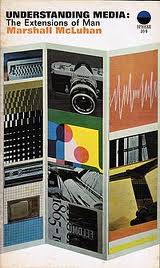
|
| "The medium is the message" |
Understanding media, The Extensions of Man
by Marshall McLuhan was published in 1964, the year that Elizabeth Taylor wore her Bulgari brooch at the Lido in
Paris. And with it the thought that "The medium
is the message" was introduced to the world. This is how
McLuhan introduced the idea in the book: "In a culture like ours, long accustomed
to splitting and dividing all things as a means of control, it is sometimes a bit of a shock to be reminded that, in operational
and practical fact, the medium is the message. This is merely to say that the personal and social consequences of any medium—that
is, of any extension of ourselves—result from the new scale that is introduced into our affairs by each extension of
ourselves, or by any new technology." In
other words, and to use an example from that day, wearing a priceless brooch in a turban at the Paris Lido (as an extension
of herself), and outshining Aristotle Onassis in so doing, was a medium (or an extension of Elizabeth Taylor)
so powerful that it became her message (ie I'm the biggest star). The conveyance of that image via the mediums of television and magazines further reinforced the "undisputed biggest
star" message. As
well as 1) the "Taylor trumping Onassis" and "sausage dog trumping the dachshund" examples of
the medium becoming the message (by supplanting a less-sticky message); 2) the Bulgari exhibition example of the medium reinforcing
the message; 3) the badger hound example of the medium undermining the message; there's also 4) the Bulgari double-decker
bus example of the medium simply spreading the message. At first sight, though, the double-decker bus with
a complete Bulgari advertising wrap had me scratching my head. I was so taken aback that I had to run after it to get
better photographs. How could, I wondered, such a highly-prestigious brand... the epitome of Italian magnificence no
less... use a bus wrap... in Beijing of all places (a place not famous for the quality of its public buses). But, after catching the bus up, it was clear that the wrap was actually
advertising a perfume from Bulgari (costing a few hundred yuan) not a piece of Bulgari jewellery (requiring several sack-fulls
of yuan). The perfume, Omnia Coral [Chinese website here], is Bulgari's "accessible luxury" sub-brand [my description, not theirs]. On Taobao, which is by far the
biggest online direct-purchase site in China, it is being advertised today for as little as 225 yuan (about US$36,
or GBP22.50). Therefore, on its route in central Beijing, the "Bulgari bus" would be seen by countless numbers
of people who could afford to buy it. It's also important to look at the medium within
the medium [with a nod to McLuhan, who wrote that the "...'content' of any medium is always another medium].
In the case of the Bulgari bus, the wrap is stylishly done and the model looks like she commands a fee with three
more zeros than some of the models you see plastered across Beijing's buses. No matter what you might think about
the artwork, though, it's hard to argue that it doesn't stand out. Which is not a bad thing considering that
most of the people who see it and can afford to buy a bottle of the Bulgari perfume advertised, are not likely to be
aware of it. Nor are they, for that matter, likely to know very much about the mother brand. But
what about the chap in his early-30s and his girlfriend in the BMW 7 series, stuck behind the bus in one of Beijing's
infamous traffic jams? Two people who probably know about Bulgari jewellery, who are perhaps also potential
purchasers of a Bulgari wedding ring. What would their thoughts be? It would be good to test the hypothesis
that they wouldn't mind in the slightest. In China, people who have loads of money and a good awareness of the
luxury category know that Chanel Number 5 is not in the same league as a Chanel little black dress. Thanks
to Bulgari's recent advertising, they are also becoming aware that Bulgari Omnia Coral is in a different league
to a Bulgari brooch. They also know that buying a piece of Bulgari jewellery would give
them full membership of the Bulgari club, while the Bulgari perfume comes only with an associate membership.
What's more, the more associate members there are, the more prestigious full membership becomes. As
far as media is concerned: In 1964, people listened to the radio, watched TV, went to the cinema, made telephone
calls, wrote letters, sent telegraphs, and read newspapers and magazines. As everyone is well aware, "digital"
is fast becoming the single medium for all of those things. One thing won't change though: The message
(affected or unaffected by the medium) will always be of paramount importance. McLuhan's following
observation rings as true today as it did in 1964 and 1594: "A
fairly complete handbook for studying the extensions of man could be made up from selections from Shakespeare. Some might
quibble about whether or not he was referring to TV [or the Internet] in these familiar lines from Romeo and Juliet:
'But soft! what light through yonder window breaks? It speaks, and yet
says nothing'." Wise words... now back to some more
thoughts about that sausage dog...
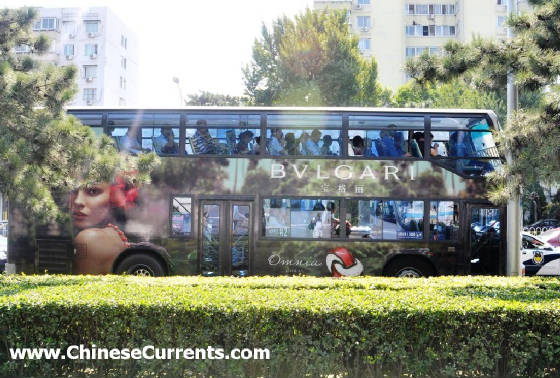
. The county that you can't find on a map Friday, 12th
October 2012

|
| To be published in January 2013 |
It has been a long time coming, but yesterday it arrived. A Chinese national
is now a Nobel literature laureate. Take a bow Mr Mo Yan. Mo
Yan, 57, grew up in a poor family in impoverished Shandong province. The hardship and solitude of those early
years ("A lonely boy, who stayed with a cow all day," he told CCTV), was to provide the spark that would
ignite a torrent of creativity in later years. Mo Yan took the harsh experiences of his younger years, and rendered
them graphically in his inimitable 'warts and all' style – described by the Swedish Academy in its award citation as "...hallucinatory realism...". Intriguing insights into the extraordinary mind and motivation of Mo Yan can
be gleaned from an interview he gave at the University of California–Berkeley during the Second US-China Cultural Forum,
in October 2010 [which can be read here on the Humanities Magazine website]. He told the interviewer that, "I think
my style is close to the American writer William Faulkner. I learned a lot from his books." The following day,
in a speech at the Cultural Forum, Mo Yan elaborated on this: “In 1984,
in the winter, on a very snowy night, I borrowed a book by Mr. Faulkner—The Sound and the Fury. I read a Chinese version
by a very famous translator. . . . The stories he wrote were of his hometown and countryside. He founded a county that you
can’t find on a map. Even though that county is very small, it was representative. That made me realize, if a writer
is to establish himself, he must establish his own republic. He created his own county, and so I created a village in the
northeast region of China that I based on my own hometown as well and established a realm for myself. After Faulkner, it occurred
to me that my own experience, my own life in that little village, could all become stories and literature. My family, people
I’m familiar with, the villagers—they can all become my characters." William Faulkner's
realm – the "county
that you can't find on a map," that Mo Yan refers to – was Yoknapatawpha County, which was brought to life in his 1927 novel Flags in the
Dust (published in heavily-edited form as Sartoris in 1929). This county, which was modelled
on Lafayette County, Mississippi, was the canvas for all but three of Faulkner's more than two dozen works. In
time and distance, "Northeast Township" (Mo Yan's fictional community, located in his native Gaomi County) in Shandong
province is a world away from Yoknapatawpha, Mississippi. But the people of the two places have much in common, as recounted
by their respective narrators. Hardship, suffering, trials, and tribulations have much the same effect on
the human spirit, the world over. But what can authors do to actually ease the suffering of those
they write about? Or right the wrongs that others have perpetrated? Some are already arguing that Mo Yan
is now in a position of responsibility, and that he should use his newly acquired fame to do many things that are outside
an author's remit (not to mention a Chinese author's remit). Some, also, criticise the decision of the Swedish Academy.
In short, pro and anti camps are already aligning behind well-entrenched political lines. Attempts
to pigeon-hole Mo Yan as either "with us" or "against us" are already high-up on the various
search engines. Less newsworthy is the voice of well-argued reason. One such
voice is Yang Lan, one of China's most successful businesswomen, and famous talk-show host. Ms Yang is also one of the
most popular micro-bloggers in China with more than 14 million followers on Sina Weibo, the most popular Chinese Twitter-like
site. In her post, timed at 8.44am today (which was re-tweeted 21 thousand times by 4.30pm), Ms Yang makes the
point that people should not heap too much expectation on Mo Yan's shoulders. New-found
fame, particularly at this important time in China's development, will undoubtedly pile huge amounts of pressure on Mo Yan.
Surely an author should not be held responsible for fixing the wrongs that he or she writes about (beyond what has
already been achieved by virtue of being widely read). An author has already done his or her job by etching
the experiences of archetypal characters into the consciousness of the reader. Mo Yan's
muse, William Faulkner, was awarded the Nobel prize for literature for 1949. In the presentation speech [here], Gustaf Hellström, a member of the Academy, offered this insight into Faulkner's mind, motivation, and brilliance:
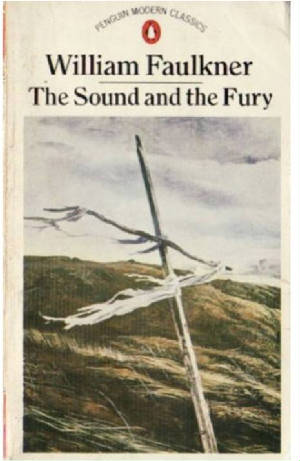
|
| Inspiring stuff... where X doesn't mark the spot |
"The fact is that, as a writer, Faulkner is no more interested in solving
problems than he is tempted to indulge in sociological comments on the sudden changes in the economic position of the southern
states. The defeat and the consequences of defeat are merely the soil out of which his epics grow. He is not fascinated by
men as a community but by man in the community, the individual as a final unity in himself, curiously unmoved by external
conditions. The tragedies of these individuals have nothing in common with Greek tragedy: they are led to their inexorable
end by passions caused by inheritance, traditions, and environment, passions which are expressed either in a sudden outburst
or in a slow liberation from perhaps generations-old restrictions. With almost every new work Faulkner penetrates deeper into
the human psyche, into man's greatness and powers of self-sacrifice, lust for power, cupidity, spiritual poverty, narrow-mindedness,
burlesque obstinacy, anguish, terror, and degenerate aberrations. As a probing psychologist he is the unrivalled master among
all living British and American novelists." [a film of Mr Faulkner receiving his award, which was presented
in 1950, can be watched here.] While I was watching the rise of Ms Yang's thread, I noticed
that a tweet on the same subject had scored more re-tweets and comments. It was from Mo Yan himself. He posted his
comment at 10.19am today. It is the first time he has posted on Sina Weibo since 27th August. Interestingly, it's
also the first time he has been seen to use a HTC mobile phone to transmit a post. Fittingly perhaps,
the Nobel laureate whose name means "don't speak" is using a brand whose tagline is "Quietly brilliant".
Although it remains to be seen whether the brand's recent poor performance can be improved by this association. At
2pm, the tweet had been re-tweeted 11,633 times and had attracted 11,301 comments. At 10.30pm, re-tweets had
more than tripled (to 36,482) and comments had more than doubled (to 24,298). Followers were signing up in droves
all day: At 10.30pm he had 466 thousand, which was 81 thousand more than at 2pm [If you would like to check out
how many followers Mo Yan has now, his micro-blog is linked to here]. This, then, is the tweet that is causing so much excitement: "Thank
you blogging-friends for your support [affirmation], thanks also for friends' criticism." Clearly,
if you would like to find out what Mo Yan is really thinking then you'll have to read his latest books. Pow! (photo at the top of the article) won't be published until next year, but you can get a
taste of it on this link here. It will undoubtedly be a massive best-seller and hot-topic in several languages. If you can pen a work that moves millions, what need is there to say a lot. That
said, whatever few words Mo Yan does say are sure to go a long way.

|
| "Wa" [frog], one of 8 Mo Yan books in this bookshop basket today (Click on photo to go to CD story] |
. Cycling to Xanadu... and back to Beijing Sunday, 30th September to Friday, 5th October 2012
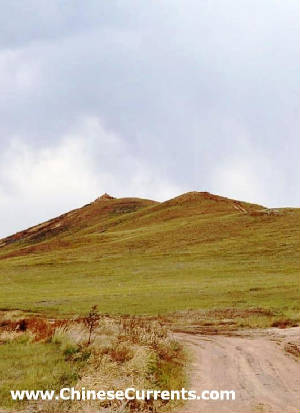
|
| The end of the track |
I was puzzled. I knew that Xanadu was somewhere in Inner Mongolia,
but had no idea where. The writings of Marco Polo offered a few clues. Mr Polo had visited the city around 1275,
after a "three-day ride" from modern day Beijing [which was then called Dadu, or big capital]. Mr
Polo wrote that his patron, Kublai Khan, the first emperor of the Mongol-controlled Yuan dynasty, would travel there for the
summer. I also found out that he went there by the "eastern road", and returned by the
"western" of the only two roads. With these clues
in mind, and after finding out that the city was called Shangdu in Chinese (Shang means, upper, first, or perhaps
also meant preferred; du means capital), I was able to locate the site of the city on Google Earth. After pouring
over the terrain maps, I noted that, more than seven hundred years after Mr Polo's travelogue, a third road from
Beijing has not been added. After much deliberation, I decided to follow the anti-clockwise route of yore. Three
days out, three days back. Except, on this occasion, pedal power would replace horse power. I also noted that Xanadu had recently (in June) been designated a UNESCO World Heritage site,
but thought it strange that no reports about its opening could be found. I did, though, discover a good deal
about the history of the city that had first captured my imagination on reading Samuel Taylor Coleridge's Kubla Khan.
What impressionable youth who yearned for travel and discovery would not have been stirred by the opening lines: In Xanadu did Kubla Khan A stately pleasure-dome decree :Where Alph, the sacred river, ranThrough
caverns measureless to manDown to a sunless sea.And so, inspired, but with only
the faintest idea of what might lie ahead, I mounted my bike at 9am on Sunday 30th September and headed north to
Huairou and north from there to the mountains. My destination for the day was Fengning in Hebei province, 185 km north
of Beijing, which I had estimated I would reach at 6.30pm. Wrong. The steep gradients... not just up and
down, but up, down, up, down and up some more to over 1000 metres above sea-level (masl)... had taken their toll. I
was in the middle of nowhere and it was getting dark. I had bought many things at the bike shop the other day, but I
hadn't bought a light (on the ironic basis that it's dangerous to cycle at night in China). Stopping at a xiaomaibu
(small shop), I asked the owner if he knew of anyone who had a room to let. "No, not
around here," said Mr Lin, who then asked me where I was from. "You're British?!" He exclaimed.
"You lot bullied us... burnt the Summer Palace... took away our land..." I gauged that Mr Lin was having
a laugh at my expense (sensing the vulnerability of a lone cyclist perhaps). "Things have changed a lot
these days," I offered. "Too right they have!" shouted Mr Lin. "These days it's Japan that's
trying to bully us; but they don't stand a chance... if they go too far... we'll crush them." Time to change
the subject, I thought. "How far is it to Fengning?" I asked. It was 30 minutes after sunset and I was struggling to see the white lines on the road; 30 minutes later it was so
dark I had slowed to a crawl. Where was the moon? I hadn't been too concerned about the night-time ride because
the sky was clear and tonight the moon would be at its brightest. But where was it? Just as I had dismounted and
had begun to push my bike, the Moon rose above the mountains in the south-east, lighting up the road ahead of me.
Moon shadows flitted past as I increased my speed before cresting the ridge and hurling downhill to Fengning. Thank
you Chang'e, the goddess of the Moon. The second day's cycling was much slower than the first.
The mountains got higher (above 1,500 masl), and the climbs were seemingly never-ending and always more up than down.
There's nothing more disheartening than cycling uphill for half an hour and recording only a 30 masl increase.
The road became narrower, before disappearing and being replaced by a rutted track. This was northern Hebei province, one
of the poorest places within a day's drive of Beijing, so places to stay were few and far between. After last night's experience,
I vowed to find a bed before dark. Problem was, there were only mountain villages in this area. I had, though,
been told that there was a place to stay "about 20 km" up the track. Mr Liu looked
pleased to see me. He confirmed that it was indeed his place that the people in the village south of there had
told me I would find a bed. Maybe they had misheard and thought I had said "shed" not "bed",
because that's exactly what I was showed. Thankfully, the shed had a bed, and also a couple of thick quilts
(the temperature at night in these parts was already below freezing). There was also a pillow that felt like
it had been filled with small, rough pebbles. But I was a grateful. Mr Liu guided
me to his friend's restaurant, a short distance away, where I enjoyed an excellent meal. Returning to the shed,
I placed one of my T-shirts against the window to block out the courtyard light, wrote a few notes in my e-diary, and
in moments I was dreaming of Xanadu (without the opium that had famously fuelled Coleridge's dream of the place, I hasten
to add). The Shed provided a great night's sleep (maybe the 10 hours in the saddle helped a bit).
Whatever, at 40 yuan (less than a pint of Guinness in Beijing) per night, The Shed is a great place to stay on the way
to Xanadu. Refreshed, and freshly powdered (Johnson's Baby Powder is not only for nappy rash), I continued northwards
at 7am. Thoughts that the high-point of yesterday would be the highest of the trip were scuppered when my altimeter
registered 1560 masl. The roads got worse. I crossed the border into Inner Mongolia, and they worsened still.
The entire road from here to Xanadu (except roads in the urban area of Duolun) had been ripped up and been replaced by a
cratered track (in these parts, new roads are not laid in stages). Thoughts that I should have come on my mountain bike
were further confirmed when I began to climb to a point somewhere in the sky. After an hour of climbing, I was getting a strong, not
to mention disturbing sense of déjà vu. Several cars, silver mianbaoche (bread vans) and lorries
that I had seen an hour before were streaming past me in the opposite direction. One car had the decency to stop to
explain what was happening. "The road up ahead is blocked," said the driver. "You'll have to go
'round". I remembered from my research that "'round" would have been an additional 4 hours at the very
least. It was 3pm. Sunset would be at about 6pm. "What's happened?" I asked. "Landslide,"
said the driver, "It'll take days to clear". With that he was off. I reasoned that
it wouldn't be too difficult to carry my bike around or over the landslide, so carried on nevertheless. I was wrong.
The mountainside on both sides of the pass had collapsed onto the road. There was no way up, there was no way around.
The only way was over the rocks that had fallen. 20 minutes later, I had managed to carry my bike over the top of the
huge pile of rocks by using them as giant stairs, some of which were three or more feet higher than the next. All
was well, until I got close to the earth-moving vehicle, whose operator was loading rocks into the back of a lorry on the
other side of the pass. I was worried that the activity might dislodge more rocks from the mountainside, sending them
hurling towards me. I shouted and waved. After a wait that seemed longer than the
few seconds that had actually elapsed, the operator looked up from his controls and, on seeing me, switched off his engine.
The next challenge was to get down from the newly-formed rock face; not an easy task given that the ledge I and
my bike were resting on was more than six feet higher than final "step" to safety. I waved to the lorry driver,
a local chap who'd spent the last three days collecting rocks from the jaws of the earth-mover. He very kindly got down
from his truck took hold of my bike with his outstretched arms, as I lowered it down from the ledge. With my bike now
safe, I was free to rock-climb down to collect it. One hour later, I spotted the track I had been looking
for, and headed north towards Xanadu. As the distant hills became less distant, the north-westerly wind increased and
the sky became darker. The mysterious mounds, the hills just to the south of the site of the city, were still over
a mile away when the first dust-storm enveloped me. I lowered my head, gritted my teeth, and cycled on.
I at last reached the hills, and began cycling up the track. After a short distance, the track was too rough to
cycle on, and so I went ahead on foot. As I climbed the hill, the wind speed increased to gale force, as if conjured
by the ghosts of Xanadu in a final effort to a stop this intruder defiling their sacred ground.
I lowered my head still further, crouching into the teeth of the gale, and moved step by step while dodging the debris
that a new, even angrier dust storm was hurling at me.
But oh! that deep romantic chasm which slanted Down the green hill athwart a cedarn
cover!A savage place! as holy and enchantedAs
e'er beneath a waning moon was hauntedBy woman wailing for her demon-lover!
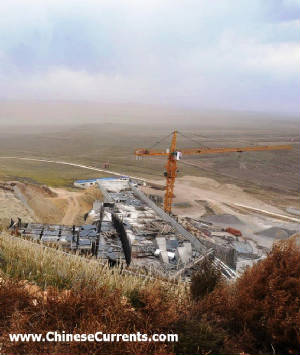
|
| "And all should cry... Beware! Beware!" |
On reaching the top, I let out a triumphant shout. The wind dropped, and
thanks to improving visibility I was able to survey the antique land of Xanadu. I was also able to examine the building
site that had been hidden until then. I'm not a student of Yuan dynasty history, but I guessed that concrete did not feature
as a building material for the city that was designed by Liu Bingzhong, Kublai Khan's chief city-planner and architect.
To be fair, the concrete visitor centre is "landscaped"
against the hill. And, according to the information board in the construction site, the building replaces an old iron
ore mine that had been responsible for carving away a large slice of the north-eastern hillside. But I couldn't help
feeling that the 48 million yuan for the project (36 million of which is being spent on the concrete museum), would have been
better spent on reshaping the hillside and on constructing a fitting tribute to the once-glorious city of Xanadu.
What better tribute than to reconstruct the "Palace built
of cane" that Marco Polo had seen there, and what he described in detail. This cane palace was the "Pleasure-dome"
that so inspired Coleridge. What's more, the reconstructed "Pleasure-dome" would
be there for the tourist season, and taken away when the season ended, leaving Xanadu exactly as it has been for several
centuries... at one with the surrounding grassland. Surely, a sympathetic architect
could work wonders with Marco Polo's detailed brief: "It
is gilt all over, and most elaborately finished inside. [It is stayed on gilt and lacquered columns, on each of which is a
dragon all gilt, the tail of which is attached to the column whilst the head supports the architrave, and the claws likewise
are stretched out right and left to support the architrave.] The roof, like the rest, is formed of canes, covered with a varnish
so strong and excellent that no amount of rain will rot them. These canes are a good 3 palms in girth, and from 10 to 15 paces
in length. [They are cut across at each knot, and then the pieces are split so as to form from each two hollow tiles, and
with these the house is roofed; only every such tile of cane has to be nailed down to prevent the wind from lifting it.] In
short, the whole Palace is built of these canes, which (I may mention) serve also for a great variety of other useful purposes.
The construction of the Palace is so devised that it can be taken down and put up again with great celerity; and it can all
be taken to pieces and removed whithersoever the Emperor may command. When erected, it is braced [against mishaps from the
wind] by more than 200 cords of silk." "...When
the 28th day of [the Moon of] August arrives he takes his departure, and the Cane Palace is taken to pieces."
After all, "In Xanadu, did Kubla Khan, a stately pleasure-dome
[not a concrete-monstrosity] decree".
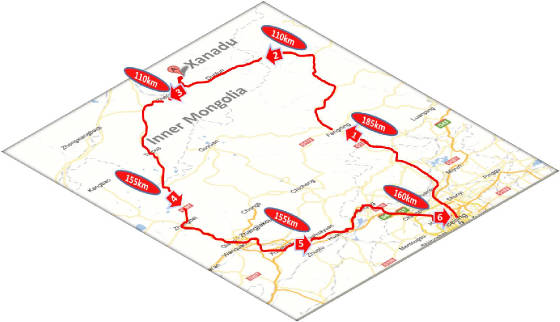
|
| Cycling to Xanadu and back (to Beijing)... 6 days, 875 km (CLICK ON THE MAP TO SEE TRIP PHOTOS) |
. Moonlight madness Sunday, 30th
September 2012
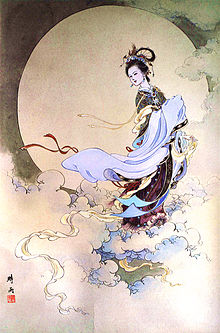
|
| Chang'e, the Chinese goddess of the Moon |
Today, on the 15th day of this year's 8th lunar month, the moon will
be at its roundest and brightest. The day, known as Mid-Autumn or Moon Festival, has been on the festival calendar in
China for at least 3,000 years, from the time of the Western Zhou dynasty. Legend has it that if tonight you offer round
pastries ("mooncakes") to Chang'e, the goddess of the moon, then she will bless you with her beauty.
These days, instead of seeking favour from Chang'e, mooncake-gifters focus on pleasing family, friends,
employees and clients. Last year, these eager recipients munched their way through 280,000 tons of mooncakes, which
cost 16 billion yuan (compared with 250,000 tons costing 15 billion yuan in 2011), according to Zhu Nianlin, president of
the China Association of [the] Bakery & Confectionary Industry [reported in the Global Times]. Those worried about their tummy-lines can still taste the festive spirit by playing the online game
that uses mooncakes as travel tokens, which pay for a quest to find out the secret of why Chang'e decided to leave her palace
on the bright side of the Moon. Even Angry Birds, the globally-popular online game owned by the Finland-based
company Rovio, is getting into the Chinese festive-mood by hatching a version of its game populated with mooncake-shaped
angry birds. Back in the real world, Haagen-Daz ice-cream
mooncakes [photo at the bottom of this article] have become highly sought-after. Gifters' storage problems have
been overcome by the company's use of a coupon system, which has made them a very easy-to-handle gift for employers
to present to their staff during the run-up to the festival. The coupons are generally well-appreciated, even though
the recipient has to visit one of the designated redemption points, and join a queue to collect their prize. Where there's a queue in China, there's also a chance that there will be a tout
about. A tout outside of Haagen-Daz was reported by the Global Times as offering to buy a 238 yuan coupon
for 60 per cent of the face value. The Global Times also reported yesterday that a department store in Xuanwumen, in
Beijing, was selling "mooncakes" at a somewhat higher price. How about two for 42,900 yuan (US$6,821)?
These "mooncakes" are made of solid gold and, according to a sales assistant in the store, "Most of the buyers
are... companies... who have bought gold mooncakes as a gift."
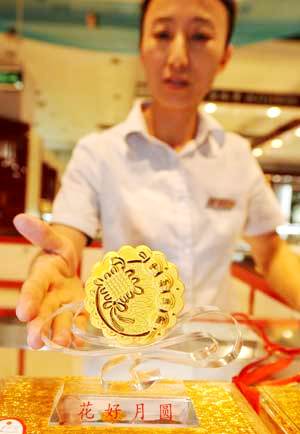
|
| Gold mooncake... Increasingly hard to swallow |
A whiff of corruption is sure to get the microblog sites abuzz with comments. This
and other stories about gold mooncakes selling like hot cakes have been burning across the Web in the
past 24 hours. This morning, my sweep of Sina Weibo (China's most popular Twitter-like site) using the characters jin
yuebing [gold mooncakes] unearthed some comments that illustrate the strength of the public's anger at the level
of corruption: Mr Li, under the headline, "High price mooncake
prostitutes Chang'e," writes about a department store with only 2 of its stock of 40,000 yuan mooncakes
left, having quickly sold the vast majority to people buying the mooncakes as a gift for people and organisations
that can help their businesses. Mr Li pleads, "We need to find the necessary means to stop defiling the purity
of Chang'e". Someone who tweets under the name Xiaosha [Little
Stupid] is more direct. Xiaosha, in her headline, describes the practice of giving away gold mooncakes as Zhenshi
Fubai (Really Corrupt). She then re-tweets an article that appeared on the Sina microblog of Zhongguo Qiyejia
Zazhi [Chinese Entrepreneur Magazine], which sardonically quips that, on the week before the holiday, the roads
in Beijing are even more congested than usual because of the large number of gongzhirenyuan [public officials] who
drive to the city to baifang [pay a respectful visit to, which is a euphemism for giving gifts to] their shangji
[superiors]. Nothing enrages Zhou Public more than news of those
responsible for protecting their interests being found with their snouts in the trough of corruption. Despite this
being an issue that causes so much public angst, countless crack-downs on those abusing their positions seem to have done
little to have cleaned things up. The scale of the problem
can only be guessed at, but some light was shone on this dark area last year, when a Bank of China report was mistakenly
(?) published on the Web. It was quickly removed, but not before a number of news agencies had read it. The
report stated that up-to 18,000 corrupt government officials and employees of state-owned enterprises had escaped the
country with more than 800 billion yuan (US$120B) worth of funds (between the mid-90s and 2008). In one case (reported by the WSJ), Xu Fangming, a former ministry of finance
official, allegedly deposited 1 million yuan into the bank account of his son who was studying abroad. The funding of
sons studying abroad has recently created much excitement in the Weibosphere (China's Twittersphere). The news that disgraced Chongqing party secretary Bo Xilai and his wife Gu Kailai had managed to send their playboy son, Guagua
(Melon), to Harrow public school, has raised more than a few eyebrows. Gu Kailai was recently sentenced to death for the murder of Neil Heywood; for which she received a suspended
sentence [Ms Gu was treated leniently because she was acting, she argued, to defend her son, whom Mr Heywood, an Old
Harrovian, had allegedly threatened]. In an earlier
twist to the sorry tale, Wang Lijun, Chongqing's former police-chief, and Mr Bo's long-time head-goon, who exposed
the murder (to the Americans during his flight to their consulate in Chengdu) was last week sentenced to 15 years for corruption,
as well as a litany of other charges. The nation's leaders have
been saying for several years now that corrupt cadres are the country's "worst enemy". The public
totally agrees. But, these days, the public expects something more than words, they want to see action. The
problem is that the Bo Xilai episode is a double-edged sword. In
summary, all of this is a long way from the steady-as-she-goes backdrop that was envisaged for the 18th party congress.
Which is of course when the next generation of China's leaders will take their place at the helm, in a reshuffle that happens
every ten years (or at least is supposed to happen every ten years). There is, to say the least, a degree of tension
in the air. When all's not well in the state of Denmark, then focus on what's happening
further afield. Back on home turf, it's also important to make
sure that all potential advantages are utilised. To which point, it's just
been announced that the congress will be held on 8th November. 8 is an auspicious
number in China and, when combined with the 11th month, and 18th occasion, it is a particularly fine omen as
far as numerologists are concerned (18 on the 118 as it were). But,
sadly, the timing of the 18th congress was a bad portent for my daughter's school show. The local
government (in a suburb of Beijing) were so worried that it was too close [several weeks away actually] to
the aforementioned much bigger show, they rejected the school's application for a performance licence. Consequently, the school had no choice but to cancel the planned show.
Which is a shame for the children and also for the parents, because it's great watching kids have their 2 minutes
of stardom (singing, dancing, or whatever takes their fancy). And
the name of the school's talent show that the authorities had felt so threatened by? Moonlight Madness, prophetically enough.
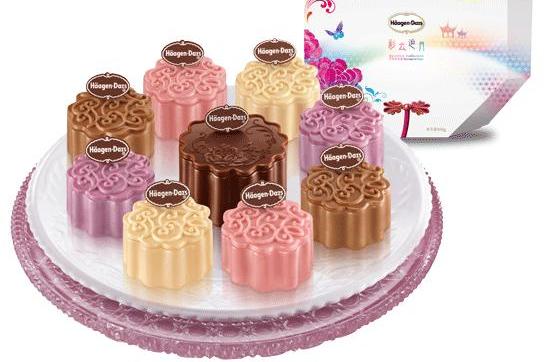
|
| Haagen-Daaz mooncakes, a far more palatable gifting idea |
. Yum! Thursday, 27th September
2012
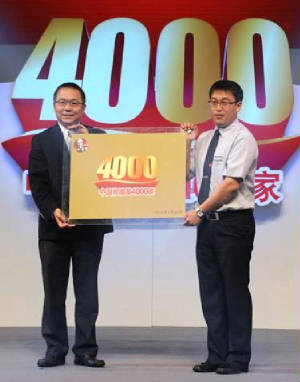
|
| Click on the photo to go to the "4,000 story" on KFC's China-site |
I went into a Giant bike shop in Beijing earlier this week with one intention:
to get their bicycle repair man to change the inner-tube on my ancient mountain bike. 60 minutes later, I had also
bought the latest and lightest touring bike in the shop. I just couldn't help myself. I had been seduced by
the Yum! factor. As I would later explain to my wife, it was an entirely involuntary act. There was nothing I could have done
to alter the course of my actions. I saw it... I wanted it... I rode it... I wanted to keep on riding it (even
more so after it had been fitted with a Brooks, the saddle of my dreams)... so I just had to have it. In other
words, there I was minding my own business when, out of the blue, I'm hit with a chemical overload in my brain
that fixes the thought, "Yum! Got to have it!". That's right, I was just following orders. This phenomenon is not new of course. People have being buying things they didn't set out to
buy since they stopped bartering the things they hadn't set out to barter. And marketers have been trying for centuries
to make it even harder for someone to go into a shop and only spend a few pennies on a handkerchief, five cents
on a soda, or 30 yuan on an inner tube, or whatever. An early example of a brand that made it really hard for people
to resist the things they hadn't realised they wanted until seeing them was created by Emile Zola in his book Au
bonheur des dames (The Ladies' Paradise). Zola was not only one of the world's
greatest authors, he was also a tremendously-insightful ethnographer, not to mention retail-marketing prophet.
In The Ladies' Paradise, he wrote about a fictional department store in nineteenth century Paris whose
boss, Octave Mouret, had designed the store's layout in a way that ensured, "...temptations present themselves
on their [ie the shoppers'] passage". 150 years
or so on from the setting of that scene, and quite a distance from Paris, the layout of the Giant store I visited is
designed with Zola's brainchild of retail strategy firmly in mind. And it's still paying dividends...
As well as buying a new Giant bike and Brooks' saddle, I also bought a pannier, a set of tools, a pair of cycling
gloves and glasses, a Cats-Eye trip-computer, and new toe clips and straps (all of which I'd seen while walking
around the shop in the time that my inner-tube was being replaced). Eager
to ride my bike, I set out for Pinggu, in easternmost Beijing, more than 30 miles (50km) from "downtown".
I'd never been there before, and had no idea what to expect. My only concern was that I needed to arrive in Pinggu
central in under 2 hours, thus achieving an average speed of 15mph (or 25kph if you prefer). The myriad of traffic lights
didn't help. So I pushed hard. It was thirsty, energy-sapping
work. So much so that, at around the 20 mile mark, the thought of noodles crossed my mind. I took this to be a
sign that my body was leaking stuff that noodles are made of, and was sending out an SOS in the form of a random thought.
Then I had a feeling that I needed to drink a bottle of Minute Maid orange (my drink of choice after a hard slog on the bike).
On entering Pinggu (in excess of the average speed I'd sought to achieve
I hasten to add), I quickly found a bumper bottle (1.25 litre) of Minute Maid and finished it in a couple
of gulps – much to the amusement of the onlooking gaggle of white-hatted chefs sitting outside of a nearby restaurant,
taking a break from their cooking duties. "Do you cook noodles here?" I asked the group. They laughed
some more. Back on my bike, and propelled by bodily need,
the search for noodles was on in earnest. Until, that is, I spotted the
KFC sign. Yum! The thoughts of noodles evaporated
instantly. My only thought was to find a place to park my bike so I could see it from the position I would order my
chicken sandwich (spicy of course). I wolfed this down while sitting on the step outside the front door of the
restaurant (next to my new Giant), and gave thanks to KFC, whose distant signage proved simply irresistible (and whose
menu had persuaded me to add an order of super-sweet sweetcorn).
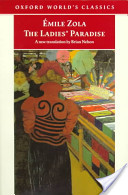
|
| Zola, superb writer... ethnographer... and retail-marketing prophet |
Another fine example, no less, of Zola's "[ensuring that] temptations present themselves on their passage"
retail strategy. I'm far from being the only person in China for
whom the KFC sign has acted like a magnet. The majority of Chinese people who have experienced non-Chinese
food would have first done so at KFC. KFC has been the leading
crusader in China of something that's taken for granted in many parts of the world... the sandwich. Not just any old
sandwich, but a chicken sandwich no less; which of course brings together the best of both worlds. That's right,
as KFC spotted 25 years ago when they opened their first restaurant in China, Chinese people love to eat chicken. Today,
they are eating more of it than ever before. KFC are helping to make this
traditionally important staple meat increasingly more popular, which in turn has helped drive their expansion in
China to about 400 new restaurants per year in the past two years. This further increases the chances
of a new store enjoying a "fast start", because the positive word-of-mouth extends increasingly far and wide. The
arrival of a KFC in any given community is also seen as a "sign" that things are on the up locally, which consequently endears
more people to the brand. Fast starts are judged by footfall
and sales revenue. In China, crowds are more likely to be viewed as positive ("This must be worth queuing for!")
than negative ("Just how long is this queue!?"). So, with that in mind, I think it's fair to say that another
of Zola's retailing principles resonates loudly here in China: "He [Mouret, the boss] laid down as a law that not a corner of The Ladies' Paradise ought to remain
deserted, requiring everywhere a noise, a crowd, evidence of life; for life, said he, attracts life, increases and multiplies".
And, just in case le sandwich is a culinary step
too far for some, KFC is now providing more-familar fare in the form of my originally-sought-after noodles, as I would
discover on their website soon after my visit (see the screen-grab below). This virtuous circle (of positive
word-of-mouth, experience, and yet more positive word-of-mouth) has driven KFC's development in China to the extent that,
on Wednesday, Yum! (which owns and runs KFC) announced the opening of the 4,000th KFC in China, in Dalian, Liaoning province.
Last month the company announced that it had opened its 300th store in Beijing. It is also significant that the China Daily (the most-read English-language government-approved media organ)
is also celebrating the landmark. In today's issue, it reports that, "KFC Corp, the largest foreign fast-food
chain in China, said it will accelerate its expansion in smaller cities despite the global economic slowdown".
The report cites Mark Chu, president and COO of Yum Brands' China division, who says that, "KFC will open more than 500 restaurants each year in the future, compared with 400 annually over the past two
years". This
is good news for the Chinese consumer, for Yum!, and for people like me who just can't (and don't
want to) resist brand-temptations that present themselves.
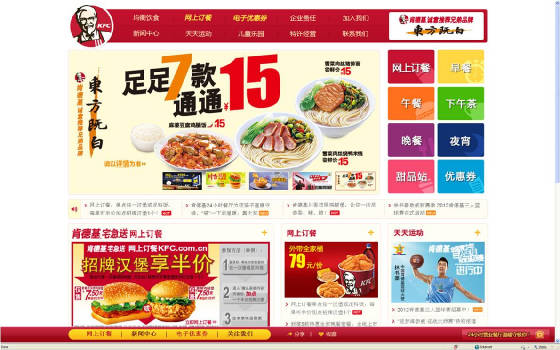
|
| Screen grab from KFC China's main page |
London calling Friday, 21st
September 2012
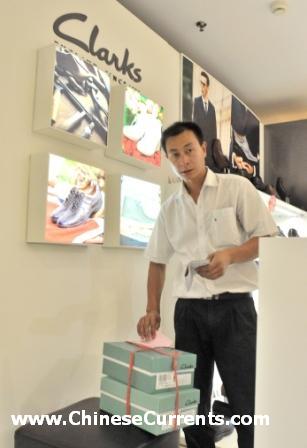
|
| New delivery |
Brands that are part of growing up cut deep into the psyche. I
saw an advertisement for one of those brands the other day while in Beijing and was compelled to dig deeper.
The more I dug, the more I realised that this is a brand that is destined for great things in China. Take
a bow Clarks shoes. I have memories of wearing
Clarks back in the 60s and 70s; of having a shiny new pair at the start of every school year; and of not growing
into them until the New Year (my Mum made sure that the new pair was always at least half a size too big, to allow "room
for growth"). My Clarks were remarkably resilient. They were my football boots (I played every lunch time),
my running shoes (in those days I used to run a lot), and they were also great for tree-climbing. They never wore out.
They were always comfortable, always ready for action. What's more, they were never the target of any peer-group ridicule.
Nor did they attract admiring glances. Not being one to show off, this is the way I liked it. In short, they fitted
in more ways than one. After that trip down memory lane, it's
time to hit the fast-forward button and jump 40 years or so to the present, to this week in Beijing. Clarks,
I can report, has moved on. It still talks about quality and comfort I'm pleased to say (because that's in
the DNA of the brand... which is not a bad string of DNA for a shoe-maker to have). But it also dials-up
something that I have always taken for granted – its Britishness. Those easily offended by stereotypes and clichés may recoil at the sight of a full English-breakfast of them on their China website
that includes a bulldog, a cup of presumably Earl Grey tea, cakes, and (taking the biscuit...) red London buses. But
somehow it all works, in a quirky sort of British way. This is in no small part due to the choice
of stylish models and a powerful song. As the red-buses whirl by, you hear a London-theme tune, Caroline,
London 1940 by Sleep Station, being played with gusto. Even President Obama is a fan of the group, so who
am I to argue. This cool track, from the album After
the War, manages to energise and contemporise the imagery of those red London buses, and even makes the "Tea"
sign looks edgy. While watching and hearing this, the Chinese line on the screen simply declares (in a very understated
British way of course) that "London fashion is at the cutting edge" (Yinglun shishang qianxi).
Yinglun can also be read as "Britishness", and shishang as its attitude. Click on the
arrow that appears on this page [that can be viewed here], fill in your Sina Weibo (the most popular Chinese Twitter-like microblogging site) account details, and you are transported
to the excellent Clarks' Weibo site – a site that has 7,182 followers (1,300 more than two days ago). The tone of the Clarks' China-website is a good fit with the vibe of
Cool Britannia that the London Olympics and its amazing opening ceremony, and the London Paralympics have done
so much to engender. Say goodbye to that stiff upper lip, standoffishness, reserve and, worst of all, snobbery. Britishness,
these days, is about approachability, warmth, generosity of spirit, progressiveness, innovation (think, also, of
the award-winning pavilion at the Shanghai World Expo); and of course it's also about self-deprecating humour (the bulldog's
expression in the screen-grab below sums it up nicely). In
short, it's about celebrating idiosyncrasy. But it's also very much about staying true to the things that really
matter... Quality, style, doing the right thing in the right way, and obsessive standards of craftsmanship.
Don't take my word for it, check out the British tourism board LOVEWALL at visitbritain.com if you're in any doubt (and no, in case you are wondering, I am not being paid by the tourism board to
write this, nor do I have any connection with Clarks shoes, other than an emotional one).

|
| Flying the flag |
This week, with thoughts of buying a pair of shoes in mind, I set about
planning my trip to a Clarks' shop in Beijing. I typed "Beijing" into the store-locator page on their website
and was immediately shown a map of the capital, which had 32 shops marked on it. One of those shops, for reasons that
escaped me, was highlighted. It was in Sogo – a very, very large shopping centre – a few miles west
of Tiananmen Square. It's a long way from where I live, but Wednesday was another lovely sunny day in
Beijing (strange, but true) and Sogo was somewhere I'd only read about. So two good reasons to go west. I arrived at lunchtime. Most shopping centres in the capital are struggling
to attract people outside of the weekends, but you'd expect to see someone. In the hour that I spent on the third
floor of the north building, I didn't see a single customer. There were hundreds of people, but they were all working
there. The place is so big, it took me quite a while to find
the Clarks shop. But where was the Clarks' sales assistant I wondered? Undeterred, I found a pair
of shoes I liked. Noticing that I needed help, the assistants at the neighbouring shops leapt to the rescue. Instead
of trying to persuade me to switch from Clarks to the competing-brands of their employers Ecco and Skap, they raced one
another to contact the Clarks' employee on their mobile phones. She had, I was told, just popped up to
the cafeteria on the 6th floor. Far from being offended by her absence,
I was impressed by the speed she abandoned her lunch to attend to me (despite me telling her Ecco comrade to tell
her there was no rush). I would later find out that the shop assistants at neighbouring outlets take a staggered
lunch-break from Monday to Friday and alert one another if a customer turns up. If today's paucity of
shoppers was anything to go by, I can't imagine that lunch-breaks are disturbed very often. I showed the assistant the style I had chosen. Unfortunately, the largest pair of that style
in the store was three full-sizes too small for me. Ms Han said that she could get it sent here from another store in
Beijing, but after checking the computer, she had to break the news that the largest size stocked in Beijing was two
full-sizes too small. "Do you have anything that fits me?" I asked. Ms Han shook her head.
The Sogo store's largest size of any style fell short by two full-sizes. The largest pair of any style in Beijing
was one full-size too small. So much for me thinking that Clarks' Britishness would extend to shoe sizes. What
impressed me, however, was Ms Han's determination to help. She even offered to try to get the style
I wanted in my size, promising to alert me by email if successful. As
well as being thwarted on my quest to buy shoes, I also failed to talk with anyone who was shopping for Clarks (or
shopping for any shoe brand for that matter). So I turned to a friend in Shanghai for help. I thought that Ms
Ying would be able to put me in touch with a Clarks' wearer, but had no idea that she wears them herself.
Ms Ying is not just a Clarks' customer, she is a fan. "Clarks? It's one of my favourite shoe brands in the
world," she gushed. "They are extremely comfortable, as well as being durable... excellent English
quality". I asked Ms Ying about her thoughts on stylishness. "Stylish? Yes, they are my kind of
stylish... something I really enjoy wearing... something that's for me... not to show off to others." Ms Ying managed to capture the mood of the new generation of Chinese consumers, who are as concerned
about what a brand does for their soul (if you'll excuse the footwear pun), as they are about what it does to make their day
that bit better. For an ever-growing number of people here, it's no longer about the signal that the brand
projects and the way it is perceived by others. Ms Ying is
at the forefront of this movement; but has no interest in being seen to be so. "I just find them so comfortable,"
she repeated. Good for the soul indeed.

|
| Afternoon tea, London style, Chinese website |
Rolls-Royce on a roll in China Wednesday, 12th
September 2012
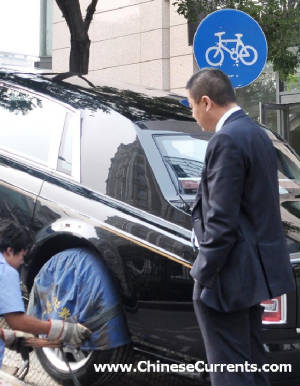
|
| Extended-wheelbase Phantom ghosts into Beijing |
Cycling in Beijing can be maddening. Selfish drivers, particularly those who drive or, even worse, park in
cycling lanes, are near to the top of my list of pet hates. The more expensive the lump of metal in the lane, the
more it grates. So imagine my blood-pressure reading yesterday when I spotted a Rolls-Royce being unloaded in my lane.
My seething was soothed, however, as soon as I began to take in just how beautiful the car
was. My gut reaction of "selfish", "inconsiderate", "thoughtless", was replaced by a different
set of descriptors that included "distinguished", "elegant", "superbly-crafted", and
"quintesentially-British". Cynics
may claim that the car is, these days, more German than British. "Complete
tosh," I say. Yes, the
brand and company are owned by BMW. Yes, the engines are made in Germany not "back home" in Goodwood, West
Sussex. And yes Torsten Müller-Ötvös, the CEO, was born in Düsseldorf not in Dorking. But
those German links do not detract from its Britishness, which is ingrained in the brand's soul. On the contrary, BMW
brings much to the party, not least its skill at managing brands. Mr
Müller-Ötvös has an impressive track record of revitalising flagging iconic British automotive brands.
As vice-president of brand strategy and product management for Mini from 2000-2003, he oversaw the global relaunch that propelled
the brand towards the dizzying heights of popularity it enjoys today. In
2011, in the first full-year of his stewardship of Rolls-Royce, the company achieved an all-time sales record of 3,538 cars
– more
that 30 per cent more than in 2010, and more than 400 per cent more than in 2005 (when only 796 cars were sold).
2011 was
also a significant year in Rolls-Royce's history in that China overtook the US to become the company's biggest market. Last year, more than 1000 Rollers were sold in China. The Beijing dealership – outside which I took the
attached photos –
was the company's most successful. Not coincidentally,
there are more "super-rich" people in Beijing than in any other city in China. According to the 2012 edition
of the Hurun report, which monitors such things, there are 10,500 people here who meet the "super-rich" requirement
of 100 million yuan or more in assets. There are also more RMB-billionaires
in Beijing than anywhere else (830 of them according to Hurun). There are Rolls-Royce
dealerships in 12 Chinese cities with 4 more "opening soon" in other cities, according to the company's website.
Not surprisingly, the vast majority of China's super-rich are residents of these 16 cities. China-sales
are so important to Rolls-Royce that the global launch of the extended-wheelbase Phantom (series II) was, in spring this
year, held in Beijing. Perhaps more surprisingly, Rolls-Royce also launched a China-bespoke model, the Year
of the Dragon special edition, which sold out within a few weeks of its launch (thanks to its theme of Britishness
with Chinese characteristics perhaps).

|
| Attention to detail - wherever its sold |
The Rolls-Royce
Phantom was voted "Best Super Luxury Car For Business" in the Hurun best of the best survey 2012.
Winners of other categories were Patek Philippe (watch); Cartier (jewellery); Giorgio Armani (men's fashion); Chanel (women's
fashion); Louis XIII (luxury drink); and Montblanc (pen). Talking of which, a pen-picture of the Rolls-Royce owner
in China reveals that he (the vast majority are indeed men) is, according to Mr
Müller-Ötvös (interviewed
by The Telegraph), between 30 and 40 years old, has more than likely studied abroad, and runs his own business. As far
as the Chinese owners of Rolls-Royce are concerned, Britishness, it seems, equates to superb craftsmanship. Mr Müller-Ötvös
told The Telegraph that, "It takes over 400 hours to produce a Rolls Royce. This is exactly what Chinese customers also love... this attention
to detail, precision, hand-crafting which is also very much in the history of China... The fact that the car has character.
You can almost feel its soul. That is not the case with cars made elsewhere. It’s about the way how we treat leather,
how we make stitches, those small details that requires time to be made and therefore they’re not cheap. That is why
we can produce max five cars per day". The focus on detail also extends to the sales consultant at the Beijing dealership, who studied every move that the
delivery-man made as he unloaded the car from the trailor. Word-of-mouth (that eulogises the brand and its service standards) heavily influences the decision-making process.
Who do the richest people in China look to for advice on how to spend their money? People whose opinions they trust,
of course. Who tend to be people who know a lot about luxury brands... not just about how much they cost, but why they
cost so much. They are influenced by people who appreciate the culture and heritage of the brand, who can tell the
stories that bring a brand to life, who can recognise outstanding quality when they see, hear, touch, smell, or
taste it. They are also influenced, in a very different way, by people who can do none of those things. And by people who,
for example, demand that their baby photo be engineered into their Roller's interior fibre optic "Starlight
Headliner" (a roof lining that gives the impression of a "starry night sky" apparently). Now that there are thousands of Rolls-Royce owners in China (all of whom bought their cars later than
2002), advocates of the brand have reached critical mass. And, given that the super-rich in China are
supremely well-connected, it is quite likely that someone who has the means to buy a Rolls-Royce actually knows a Rolls-Royce
owner. The owner's personality, demeanour, and perceived sophistication therefore, are increasingly likely
to be a greater influence on a would-be purchaser than any other exposure to the brand. The sales consultant
with a meticulous eye for detail, I watched taking delivery of the extended-wheelbase Phantom (Series II), will of course
continue to act as a brand ambassador. But his role is being usurped to a large extent by the brand ambassadors behind
the darkened glass of their Phantoms and Ghosts. I was thinking
of sounding out my hypothesis with the smart-suited sales consultant. Then I suddenly remembered
that I was riding a bike (and not the Rolls-Royce of bikes I have to say). I also had 30km of road-dirt plastered
to various bits of my anatomy. So, not wanting to sully his idea
of Britishness, I instead snapped a few shots that appear here, before squeezing past and continuing very un-phantom-like
down the cycle lane.

Riding out to Beijing's wild west Wednesday, 5th
September 2012

|
| Sunflowers for sale |
I woke up on Monday realising that something had changed. As I opened the curtains,
my eyes took some moments to adjust to the unexpected onslaught of brilliant sunlight. Not only was it a crisp
ten degrees cooler than the previous day, but the sky was bluer than I had seen in Beijing for quite a while. Autumn
had, at long last, arrived. Thoughts quickly turned to getting on my bike, because days like this in Beijing should
not be spent indoors. I've often wondered what it's like to cycle along the fulu (the service road)
of the G6, the Jing-Zang (Beijing to Tibet) highway. Not all the way, mind (greater Tibet starts more than 2,000
km from central Beijing), but far enough to feel that I had made the most of the day. As it was, a strong head-wind,
a 500+ metre slog up the mountains (that's altitude-shift not distance-covered in case you are wondering), my
general lack of fitness, and the cycling-shorts version of nappy rash conspired to restrict my Westward Ho!
to a meagre 75km. Although 75km north-west from central Beijing is still a very long way from
the border with Hebei, it is far enough out to see a different side to Beijing – a wonderfully-verdant wild side.
The sun was still shining this morning. Thoughts of getting on my bike
for another 150km trek melted away when I failed an early-morning fitness test (as anyone who has suffered cycling-shorts-rash
would testify, time is the only healer). Inexplicably, the urge to go westward was still strong. Coincidentally
or not, I then remembered that, almost 10 years to the day, I had travelled by subway to Pingguoyuan, Beijing's westernmost
subway station. 10 years on, it still retains this accolade. Most other things about the Beijing subway have
in that time, however, changed beyond recognition. When I rode there in early September 2002, there were only two subway lines. Lines one and two funnily enough
(the nomenclature is not as obvious as it seems, as line 13 was the third line to open, a few weeks after my ride out
west to Pingguoyuan). Now there are 15 lines. The first line was completed in time for the National Day 20th
anniversary celebrations of 1st October 1969, but would not open to the general public until 1981 (until then only certain
cadres were allowed to ride on the subway). In those days, it cost ten cents (one-tenth of one yuan) to travel to Pingguoyuan
from central Beijing. These days it costs 2 yuan to travel there from any station on any of the 15 lines, no matter
how far you travel (the fare was standardised at this level in October 2007; before that, prices had ranged between
3 and 7 yuan depending on the line and number of transfers). And so today, thanks to the Beijing city government's very generous subsidy, I
rode for two hours and 30 stations, across four different lines, all for the price of a 550ml bottle of Nongfu water
(the most popular bottled water in Beijing, and also one of the cheapest). A taxi-ride there during rush "hour"
would have cost 300 yuan and have taken not far short of 3 hours, according to the taxi driver who would take me back to Pingguoyuan
station following my three-hour walk-about there. Perhaps tempted by their in-station and on-train ads (as with many
consumers, I don't like to admit I'm influenced by these things), I couldn't resist the lure of the KFC sign that
greeted me as I emerged from the station. "We've been here a few years," answered the waitress
when I asked her when they had opened. The vagueness of the answer prompted me to ask someone else, who was also
unable to tell me when KFC opened its doors in Pingguoyuan. I couldn't remember seeing it in 2002 (KFC had fewer
than 100 restaurants in Beijing at the end of that year, compared with 300 now), but I couldn't be sure it wasn't there.
But I do remember that, in 2002, the place was far less developed than other Beijing suburbs I had visited. I had
noted that Pingguoyuan was a frontier outpost, where the city pushed against the countryside. There was no sign of that
on the main street today; which was in a word "unremarkable". One can see the same level of development, and get
a similar vibe in the vicinity of most Beijing subway stations.

|
| "We've got something at every price" |
Even the property prices were unremarkable in that the property prices there were every
bit as ridiculously high as the prices in most places in Beijing. I lingered a little too long at the window of one
of the many estate agents' offices I walked past. "Can I help you?" asked an excited salesman, running
out to greet me. "Just looking," I replied. "We've got something at every price... what do
you want to spend?", continued the sales pitch. "The prices are crazy..." I said, "...just as high as
in central Beijing". Mr Bai had a prepared answer: "That's because we are on "yihao xian"
(Line 1), the most important subway line in Beijing, with a direct link to Tian'anmen." Fair enough,
Tian'anmen West subway station is indeed just less than 30 minutes and 21km from Pingguoyuan station, but the price of
3 million yuan (US$473k) for a 111 square-metre two bedroom apartment in this part of Beijing was astonishing nevertheless. I walked on, puzzling over the puzzle that continues to puzzle: how long can Beijing property prices remain so
ridiculously high? As I turned a corner, I saw something that took my mind off the property-price conundrum.
The scene, although also unremarkable, was a pleasant break from the urban-monotony of Pingguoyuan's main street.
A line of street vendors was doing a brisk trade. Except for a couple of truck-drivers selling water
melons, all of the vendors were selling their produce from the back of a tricycle-barrow. I was struck by the diversity
and colour of the fruits and vegetables on offer, as well as by the vibrancy of the scene. Small groups of
shoppers surrounded each of the twenty-or-so vendors, haggling furiously. A world away from the depressingly-quiet,
customer-free estate-agents' offices, here was a scene of noise, excitement, and frenzied economic activity.
Clearly, bargains were being snapped up and, unbeknown to the buyers or sellers, inflationary pressures in the wider
economy were being further eased. As interesting as the scene was, it was far from remarkable, because street vendors
ply their trade from tricycle-barrows all over Beijing. I spoke to one of the traders, a woman in her late 20s,
who was appropriately-enough selling apples. "At last, I've found apples in Apple Garden [the literal translation of
Pingguoyuan]," I said with a smile. She was gracious enough to laugh at my joke, before turning her mind to the
serious business of selling some apples to me. No sooner had she asked me how many apples I wanted to buy, a shrill
cry rang out: "Chengguan!!" There was a moment's silence that reminded me of something I have witnessed at
bird colonies when the cacophonous mass falls silent for one second only. It's called a "dread". Dreads
can go two ways. The birds either overcome their collective anxiety, returning to their garrulous ways as if nothing
had happened; or they explode into the air. The Pingguoyuan "dread" was followed by its own explosion
of activity. The apple-seller, as if her livelihood depended on it (which it did), moved from the
back of her barrow to the handlebars of her bike with practiced dexterity. "Sorry, got to go," she
said matter of factly. And she was off; as too were all of the street vendors. If tricycle-barrow racing
were an Olympic sport, then Pingguoyuan would be high on the Chinese selectors' list of places to visit. And the apple-seller
with red hair, the fastest off the mark, would be weighing up offers from a queue of corporate suitors eager for her
to be their spokesperson. The Chengguan are indeed dreaded. They are the street-vendors' worst nightmare. The word literally
translates as "city-management", but street-vendors use the term to describe the officers who work
in that department (in these situations, the word is simply a call to action... to run away as fast as possible). Chengguan are
there to stop street-vendors trading without a licence; it's also their job to ensure that the people whose properties are
to be demolished, don't delay the arrival of the wrecking ball. In short, "enforcer" better describes
what they do. Not surprisingly, street vendors have many other words for The Enforcers. I looked to my left, where about 20 enforcers were leaping out of their
vehicles; vehicles marked with characters that street-vendors fear to see: Chengguan Zhifa (City-management Enforcement).
20 enforcers against an equal number of street vendors. But 18 of those vendors were now heading for the Western hills
so to speak. There was no attempt to chase them. Instead, The Enforcers descended on two vendors only, tearing
their grips from the handlebars of their tricycle-barrows, which were then loaded onto the back of their pick-up trucks.
There was no sign that the two targeted vendors had been arrested though. The Enforcers, it seems, were only interested in
taking away their tricycle-barrows and stock of vegetables. One of the street-vendors was putting up a fight. The crowd that had now
gathered was treated to the sight of an little old woman beating back the gang of Enforcers with nothing more than
her tongue. She cursed them with all her might. And, riled to the point of boldness, she drove into their
midst. For several seconds the ruck swayed from side to side. Incredulously, she emerged clutching a heap
of Chinese cabbages that she had obviously liberated from the back of an enforcer's truck. She stormed
past me, still cursing the uniformed officers, who did nothing to stop her striding away with her cabbages. A wild,
surreal scene indeed. Moving on, I pondered over another imponderable. Why did The Enforcers target
the old lady and one other chap (who also fought back despite the overwhelming odds against him, and despite being filmed
by one of the uniformed officers), and not go after any of the fleeing street-vendors, many of whom would have been
a much softer target, and most of whom carried a far more valuable stock of fruit and vebetables? I hadn't worked
out the answer by the time I spotted another line of street vendors, about a mile down the road. "Do you want to buy one of my sunflowers...?" asked a small voice.
"...They're only 5 yuan, and the smaller ones are 4 yuan... They're great; go on, try a seed; they're so tasty".
How could I resist. Small Voice then asked me where I was from. "Wow, you're British..." she gushed, "...How wonderful...
I'm going there in 8 days... I'll be studying finance at the University of Bedford... for 2 years." Flying to Britain in 8 days and studying there for 2 years?? Now,
let's take a step back here. Street-vendors are all economic migrants from the countryside, right? They live hand-to-mouth,
earning just enough to survive and, in good months, perhaps sending back a few yuan to their families in some far away mountain
village... right? Clearly wrong. Small Voice is from Pingguoyuan, and holds a coveted Beijing hukou
(the right of residency here). Her parents, she told me, run a (licenced) vegetable store close by.
She contributes to the family's coffers by selling food and vegetables from her tricycle-barrow. But how many fields-full
of sunflowers and rows of vegetables would she and her parents have to sell to be able to afford to study in Britain for 2
years I wondered. The answer has nothing to do with vegetables, and everything to do with the same property
bubble that has now also enveloped Pingguoyuan. Small Voice told me that, for years, her parents had owned and rented-out
two small apartments in Pingguoyuan. They had sold one of the apartments to finance their daughter's two-years of study
in Britain. But she looked far too young to be going there to study for a Masters or PhD.
She explained that she was actually in her first year at the Chinese Agricultural University in Beijing, and that her university was linked to
the University of Bedford. Half of her four years as an undergraduate would be spent at Bedford. I watched
the Small Voice as she patiently negotiated with the woman in the photo, before striking a deal that was good for both
of them. Impressed by her social and business skills, I concluded that she was destined for great things in
the field of finance, the subject she was reading. Clearly, her parents had made a wonderful investment in all of their
futures by enabling their daughter to turn her face towards the sunlight of international study. Talking of financial matters, what was the cost of my day trip to Pingguoyuan I wondered?
It was certainly a cheap day out: The subway cost 4 yuan (not bad for two two-hour rides); I spent 31 yuan at KFC;
3 yuan for a bottle of Minute Maid pulpy; 1 yuan for an Yili ice lolly; and 10 yuan for the taxi to get me back to Pingguoyuan
station following my excursion. That's 49 yuan, which is marginally less than a pint of Guinness at my
favourite Irish pub in Beijing. Cheap maybe, but nowehere near as cheap as my day out cycling to and from the western mountains on Monday, when I spent the grand total of 28 yuan. Which all goes to prove that you don't have to go wild when you ride out to Beijing's wild west.

|
| Pedlar without pedals - a street vendor's tricycle-barrow is taken out of service |
Shedding tiers Sunday, 20th
May 2012
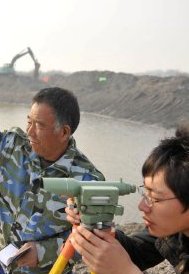
|
| Build it whether they come or not |
For some, Happy Island is now a happier place. The small island in the Bo sea
has been promoted from 5th to 3rd tier. The shedding of two tiers is no small matter, particularly if you happen
to be one of the Tangshan [3rd tier] government officials who can now make the most of the island's sumptuously appointed
sea-view villas. If you are an official of Laoting County [5th tier], however, the situation is not nearly as happy
as it used to be. That's because the Tangshan city government has promoted Happy Island (Kuaile
Dao) to an area that falls under its (not Laoting County's) direct jurisdiction. And to make sure that everyone
knows who's the lord of this particular manor, Tangshan officials have re-named the place Puti Island ("Happy
Island" was a Laoting County invention apparently). The locals, however, continue to refer to it by its ancient name of Shijiu Tuo.
And, with a nod in Laoting County's direction, I'll continue to use "Happy Island" (because it's a name that
has been doing what it says on the can during the many visits I have made here over the past 18 years). Laoting County, even though it "reports" directly to Tangshan, is
actually two levels beneath it as far as the complicated matter of Chinese population and land administration
is concerned. That's because Laoting is a xian (county), not a shi (county-level city).
Tangshan, a diji shi (regional city, or prefecture), controls 5 xian and two shi. China,
in case you are wondering, is divided into 283 prefectures, 370 county-level cities, and 1,461 counties. Tangshan "reports" to the provincial government of Hebei (seated in the
provincial capital of Shijiazhuang), which in turn is administered by the central government in Beijing. By virtue
of its provincial capital status, Shijiazhuang qualifies, in political terms at least, as a 2nd tier city (one of
27 provincial and autonomous region capitals to do so). The number of 2nd tier cities increases to 32 if you include
Dalian, Ningbo, Qingdao, Shenzhen, and Xiamen – which are categorised as sub-provincial cities (fushengji chengshi) by virtue
of their direct reporting line to Beijing in respect of all economic and legal matters (the only non provincial-capitals
to do so). Then there are of course four 1st tier "super-cities" – Beijing, Shanghai, Tianjin and Chongqing – that have the distinction
of being municipalities (zhixiashi). Why is this important? Well, as a rule of thumb, the higher the tier, the
more funding is available for development generally and infrastructure development in particular. In the context of
Happy Island, the difference between "5th" and "3rd" tier funding is as jaw-dropping as it is eye-watering:
I first visited the island 18 years ago, when it was under the administration of Laoting
County. It was low tide as the small, woodworm-riddled boat approached the landing point along a narrow channel that
only a seasoned crew could navigate with any confidence. It's impossible to say whether the crew that day were not
as seasoned as they should have been, or whether it was a particularly low tide that scuppered things. One
thing is for sure, we couldn't get within 20 yards of the quay. Keen to get ashore, I decided to jump into
the waist-high water to rescue the situation by dragging the boat close enough to the shore to allow a plank to
be laid for my fellow passengers to make it to the island. But it wasn't luxury that awaited us. In those
days, the tin-shack accommodation didn't even have running water, except when it leaked through the roof during heavy
downpours. So much for being under the administrative umbrella of Laoting County. Fast-forward to 2012: A fleet of shiny new tourist boats await to
whisk a steady flow of day-trippers from a multi-million RMB quay development to the island's plush
new landing area. These days, there's a deep channel that's regularly dredged, ensuring that boats
can land whatever the vagaries of the tide. The island's development budget has also paid for a plush restaurant with
dozens of staff; a grand temple complex (that continues to get ever-grander); miles of roads serviced by chauffeur-driven
electric buggies; and even something resembling a golf course. And things are just getting started. There are
plans for a 300 million RMB golf and spa centre and, horror of horrors, a ghastly land-reclamation project (to
enlarge Happy Island and Moon Island) that will cost a reported 1.368 billion RMB, according to the Tangshan government's
website. The impetus for development is so strong, in fact, that a link to the mainland has been
built that looks like a giant's causeway, facilitating even faster development and higher-spending on infrastructure
and reclamation. Puzzled by the number of large trucks and the size of the earth-moving vehicles, my
8 year-old daughter wanted to know how they managed to get onto the island. I too was puzzled, until I spotted
the causeway. After I'd broken the news that the "monsters" had arrived here by road, her puzzlement turned
to disappointment: "Dad, does that mean Happy Island isn't an island?" My 8 year-old makes an important observation. But please promise not to
tell anyone because, from a tourist perspective, Happy Point doesn't have anywhere near the same drawing power of
Happy Island. Not to mention that, without an island, there wouldn't be the need for a car park
the size of a football pitch. No need for a fleet of expensive tourist boats. And, of genuine concern,
a small-army of people would be looking elsewhere for a job. From a punter's perspective, neither would there be the feeling that they've
journeyed to somewhere exotic. A 30 minute boat trip tends to do more for the soul than a ten-minute bus ride.
As heart-warming as the journey undoubtedly is (and there's also the visit to the "Buddhist culture communication
centre" to look forward to), it's hard to imagine that the overall proposition would appeal to vast numbers
of people. Regardless, the visitors-per-year target for the Tangshan Bay International Travel Islands project [the other two islands
are Moon Island and Lucky Cloud Island] has been set at an astonishing 2 million people [The overall investment is budgeted at 22.2 billion RMB]. But this is China, so history
would suggest that you shouldn't bet against it meeting the target. That said, it's hard for this veteran
China-watcher to arrive at any conclusion other than the "Build it and they'll come" ethos, that has driven economic
development during my time here, is being replaced by "Build it whether they come or not" desperation. This is
in no small measure due to the increasing dependency on high-spending infrastructure projects to shore up the
nation's key economic indicators. In short, these projects have become the drug that enables GDP to get out
of bed in the morning. As well as testing the laws of economics, the intensity of Happy Island's development is
putting an immense strain on the area's ecology. The island and its shoreline is an internationally-important staging
post for countless numbers of migratory birds on their way to and from their northern breeding grounds (a precious few
of that number are Siberian-breeding Spoon-billed Sandpipers, a species on the brink of extinction). Their twice-yearly journeys
are about to get even more precarious from next year when construction of more than 100 offshore wind-turbines begins
in earnest. This wind farm will be (for a while at least) China's biggest and most costly (the equivalent
of US$910m). Clearly, the true cost of Happy Island's infrastructure development, land reclamation,
and so-called "green energy" project far exceeds the amount that appears in Tangshan city's accounts.
The true cost could be incalculable. Sometimes, shedding tiers can be a crying shame.

|
| Message in a bottle... A Spotted Redshank, on its long way north, avoids a less happy island-feature |
Biting the hand that feeds Friday, 23rd
March 2012
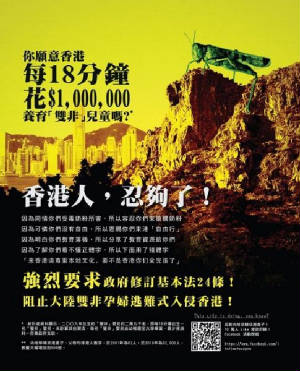
|
| How not to make friends and influence people |
If a country, territory, or destination is a brand, then its residents are its ambassadors
and its visitors are its consumers. The destination’s “brand value” (visitors’
perception of it) can either be augmented or eroded by events, or by the actions of just a handful of its residents.
As any brand trustee would tell you, just one “rogue” in the organisation can cause a remarkable fall from
grace – that can take months and sometimes years to repair, if it can be repaired at all. Countless
millions of people believe, quite rightly, that Hong Kong is a fabulous place to visit. A spectacularly-increasing
number of Mainland Chinese tourists have also been won over by the delights of Hong Kong: In 2003, there
were 9.8 million visits made; that figure rose to just shy of 18 million in 2009; and topped 28 million in 2011 (about 24
per cent up on 2010’s total, which was 26 per cent more than 2009’s). In 2011,
67 per cent of all arrivals into Hong Kong embarked from Mainland China. The demographic of Mainland
visitors provides a clue to their motivation for making the trip: 56.8 per cent of visits were made by women, and 56.5 per cent of all visits were made by 26 to 45 year-olds.
Whereas, for instance, women visitors accounted for 35.7 per cent of visits that embarked from the US, and only 36.9
per cent of visits were made by 26 to 45 year-olds. In other
words, a Mainlander visiting Hong Kong is typically 35 year old and female. What’s more, she is here on a mission.
She is here to shop. Mainlanders (mostly women) don’t just spend more money here than
anyone else; they spend a much higher-proportion of their money on shopping. The
figures are simply staggering: In the first half
of 2011, overnight visitors from Mainland China spent HK$48.3 billion (65.4% of all overnighters’ expenditure); while
day-trippers spent a total of HK$16.1 billion (89.4 per cent of all money spent by this type of visitor). This
represents a 19.2 per cent and 31.1 per cent increase respectively, compared with the same period a year earlier. Day-trippers
from Mainland China spent a whacking HK$2,456 per day-trip (the vast proportion of which was spent on shopping) “Overnighters” from the Mainland
spent 70.1 per-cent of their entire expenditure in HK on shopping (Just 13 per cent was spent on hotel rooms).
In fact, 78 per cent of all money spent on shopping by visitors in this group, was spent by those coming from Mainland
China – a whopping HK$33.8 billion of the total first-half 2011 expenditure of about HK$43 billion. But how important
is this expenditure to Hong Kong’s economy, not to mention to the thousands of shops that are the recipients of the
Mainlanders’ cash? In a word, it’s significant. According to data from the
Hong Kong Census and Statistics department (HKCSD), the contribution that expenditure on inbound tourism makes to local GDP
has been rising steadily – from 2.5 per cent contribution in 2006 to 3.5 per cent in 2010. The HKCSD also calculates that, in 2010, 190,500 jobs relied
on inbound tourism (that’s 45,600 more than in 2006), including 90,500 jobs in the retail sector (28,200 more than in
2006). So, if the
trend-lines continue into 2012, Mainland Chinese visitors would be set to contribute around 3 per cent to Hong Kong’s
GDP; as well as being responsible for the creation and preservation of many thousands of local jobs. With this in mind, one would think that “Brand Hong Kong” would be welcoming Mainland visitors
with open arms. Worryingly, though, many Mainlanders are not feeling the love.
That’s in no small part due to a full-page advertisement, paid for by 800 unnamed contributors, which
ran in Apple Daily, a popular Hong Kong newspaper, on 1st February this year. Under the headline, “Hong Kong people, we’ve had enough!”
– the advertisement dramatises what the authors perceive to be the threat to Hong Kong posed by what they describe as
“locusts” (Mainland mothers who give birth to their children in Hong Kong hospitals – thus securing various
social benefits in Hong Kong for the child). The “locusts” symbolism inspired a few people to extend the insult to
the general population of Mainland Chinese tourists in Hong Kong. A five minute video, “Locusts’
World” – that is a parody of famous Hong Kong pop hit – castigates Mainlanders for, among other things, not
respecting the Hong Kong social code. The language and images it uses are insulting to the point of
being abusive; and are clearly intended to ridicule and to incite loathing. The line, “Inch by inch, Hong Kong is being taken over by these
pests,” provides a flavour of the senseless vitriol that oozes from the lyrics. As well as various versions
of “Locusts’ World” videos that are circulating on the Web, there is also a particularly sickening image
of some thugs singing the “Locusts’ World” song to Mainland Chinese tourists on a high street in central
Hong Kong (an image that was first published in the Apple Daily). Interestingly,
none of the videos appear on the popular Chinese video-sharing websites Youku and Tudou (presumably they was deemed inflammatory,
and removed); but versions of it continues to be available on various less-well-watched Mainland China sites, including v.ifeng.com,
where the video has been viewed by close to half a million people. Forums and weibos (Chinese
Twitter-like sites) across Mainland China have been awash with indignation. Mr Xie, from Guangzhou – who has almost 40 thousand followers of his Sina weibo – sums up his
feelings: “…[formerly] the Hong Kong government would put the focus on promoting Hong Kong Tourism.
[Without which]… the economy of Hong Kong will never flourish. Shame on this action (singing the “locusts”
song)! Go and sing it in Tiananmen Square if you have the balls to do it!” For the sake of “Brand Hong Kong” – and for everyone who genuinely
cares about this wonderful place – there needs to be a strenuous effort made by all concerned to stop this nonsense
and to ensure that would-be tourists from the Mainland (including Mr Xie and his band of almost 40,000 followers)
receive the warmest of welcomes, and to persuade them that the only thing they need to be worried about is being spoiled for
choice when spending their hard-earned cash.
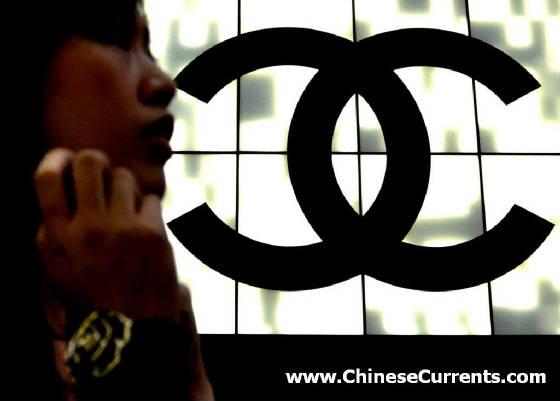
|
| Shopping on Hong Kong's Canton Road - Best not to spoil the magic |
Riding the Water Dragon Friday, 20th January
2012
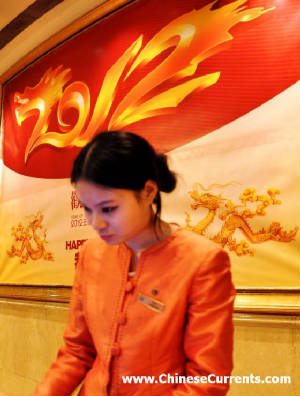
|
| 2012 - The Year of The Water Dragon |
Dragons are notoriously unpredictable beasts. There’s
only one thing that can be said with any certainty about them… if you are going to ride one, you’d better hold
on tight. The good news is that this year’s
dragon is easily the most civilized of the five that exist in the otherworld of the Chinese zodiac. I’m pleased to report that the dragon for 2012 has a “water” alter ego no less. Water, one of the so-called “five elements”, extinguishes
the dragon’s fiery breath and dampens its natural tendency to charge about the place. This is just as well. The last thing the world’s economy needs in these
parlous economic times is a Chinese dragon doing what dragons naturally do: behaving randomly. What about in its own backyard? Is a dragon with a counterbalancing water
element the best kind of dragon for China in 2012? The
answer is a resounding “Yes”. Because,
given the circumstances that are set out below, any dragon without such characteristics would be the wrong dragon: Year-on-year GDP growth in Q4 2011 was a paltry (!) 8.9 per cent, the
worst quarterly performance since the first two quarters of 2009, and worryingly close to the eight per cent that could likely
be an indicator of troubled times;
Utilized inbound foreign-direct-investment (FDI) in December 2011 was down by 12.7 per cent year-on-year (full-year
2011 FDI was up 9.7 per cent);
The fall in demand for Chinese exports is causing high-levels of angst in the cities whose economies are heavily
export-reliant (particularly among the people who have been laid off and the bosses who can’t pay the banks; as well
as city-government cadres whose careers are on the line, not to mention the bank managers who have lent unwisely);
Then there’s the tinderbox of stubbornly-high property prices which,
despite efforts to rein them back, continue to make it impossible for most average-income earners in many cities to buy a
first home with their own (as opposed to their parents’) money;
And, most worrisome of all, is the spectre of inflation that is stalking the land.
The official consumer price index (CPI) in 2011 was 5.4 per cent higher than the previous year’s.
Although inflationary pressure has reduced overall in the past three months, it remains troublingly high in the food
category, with prices officially 9.1 per cent higher in December 2011 than one year before (pork prices were up 21.3 per cent
in the same period).
When
you add all of this up, it’s not surprising that there have recently been several cautionary statements issued by various
government spokespeople and organisations that have seemingly been designed to dampen people’s expectations going into
the Chinese New Year: Xinhua, China’s official
news agency, reported last week that a central-government three-day central economic work conference in Beijing had described
the global economic outlook as “extremely grim and complicated”. The report also warned about “unbalanced, uncoordinated and unsustainable” strains
on China’s economic development. Thankfully,
this rather dark economic cloud does have a silver lining. The good news for marketers generally is that, in 2011 (versus 2010), total retail sales increased by a healthy 17.1
per cent – only marginally down on the 18.4 per cent growth in 2010 (versus 2009). The even better
news is that, in the month of December 2011, retail sales were 18.1 per cent higher than in December 2010. Mr Gao from Chengdu, a 24-year-old born in the year of the dragon (the
dragon before last), throws some light on what’s behind the seemingly contradictory economic indicators: “Of course times are difficult… I have to work much harder
these days than I’ve ever done… my boss owns me,” he told me with a grimace. In these tough times, people know they have no choice; they’ve just got to work harder,
and they have to put up with whatever is thrown at them. They also know that a positive attitude (drive,
determination, and resilience in the face of hardship) is their only hope. In other words, they just have to jump onto the Water Dragon’s back, take a deep breath, dig their spurs into
its side… and hold on for dear life (The Water Dragon is, by the way, a fairly placid animal until someone tries to
ride it). Mr Gao continues his story: “That’s why I feel I really deserve to have the things I want.”
[Things to buy; things to do; things to experience…] Ms Chen, a 28-year-old from Shanghai, goes further (literally so): “Of course it’s crazy at work, I have to start before 8.30am and finish 12 hours
later, and so when I get time off, I really go for it [Shopping, eating out, going to the gym…]. And
when I get a long break, I jump on a plane and go somewhere I’ve always dreamed of going,” she said. I asked Ms Chen what she planned to do during the 7 day Chinese New Year
break. “Go to Thailand!” she gushed. “What about your family, won’t they miss you?” I asked. “Of course not!” she replied. “I’ll be with them on New Year’s Eve [the most important family gathering], and I’ll leave
the following day.” [Her boss has agreed that she can return to the office two days later than everyone else]. The more I listened to people talk about The Year of the Water Dragon,
the more I realised that their coping mechanism for the strains and stresses of working at such a frenetic pace is, funnily
enough, “counterbalancing”. When things are so far out of kilter, when the pressure is so intense,
then there has to be an equal and opposite force applied to restore balance. I have been aware of this phenomenon for several years,
but from what I have heard in the past few weeks, there’s no doubt in my mind that the pressure on people in The Year
of The Water Dragon is likely to be even greater than in previous years. Therefore, in their free time,
they are more likely to play that bit harder. And, when shopping, they are more likely to spend that bit
more on stuff they feel they bloody well deserve.

To coin a word, they need to renERGIZE! (The red “n” is the Chinese character
that depicts a person or people; it is pronounced “ren ”). In
other words, they need to recharge their souls. They need to replenish what has been sapped by the strains
and stresses of living up to everyone’s increasingly higher expectations of them (their boss is demanding more, their
parents are expecting great things, and their partner wants to see a fast and steep improvement in their standard of living). A great way to renERGIZE is to share your experiences with “kindred spirits”.
With the people who are riding the Water Dragon just as hard as you. It’s
not that surprising, then, that at the end of 2011, about 250 million people (of the-then Internet population of 513 million)
actually had a Weibo – a Twitter-like microblog. Also, it’s worth noting that 356 million of
those 513 million “netizens” kept in touch via mobile phone Internet access. Thanks
to the increasing affordability and connectivity of smart phones, the coverage and frequency of microblogging and instant
messaging is set to increase even faster in The Year of The Water Dragon. With a nod in the direction of Bob Hoskins, who starred in a British
Telecom TV advertising campaign in the 90s, let’s just say that “It’s good to talk”… …Particularly so when stories are shared about the day’s hair-raising ride on The Water Dragon.
Before, that is, moving the conversation on to just how hard everyone needs to renERGIZE at the weekend, to recover
from the ride.
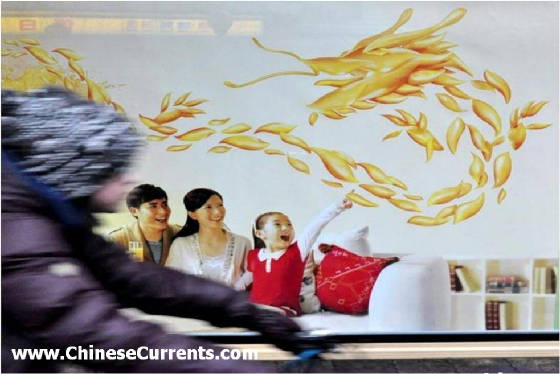
|
| Enter The Water Dragon! |
Self-pandactualisation Wednesday, 11th January
2012
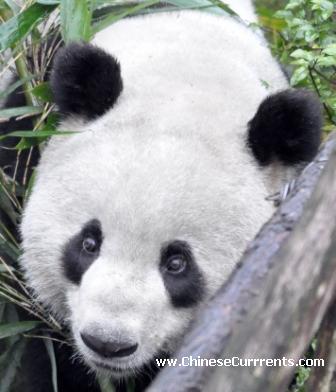
|
| Long walk to freedom |
Getting up really early is usually not much fun. But today's early rise was an exception. I was so looking
forward to the day that I jumped out of bed two hours earlier than the early alarm-call. Because today's the day
the pandas have their first picnic of PYO (pick-your-own) bamboo. So, with camera in hand, I joined a bus-full of reporters, photographers, and film crews
and headed for the grand opening ceremony of Panda Valley, in Dujiangyan, on the outskirts of the Chengdu city administrative
area, about 30 miles from the city centre. Panda Valley, which was built at a cost of about 300 million yuan (US$48M), is designed
to be a "half-way valley" between the Chengdu Panda breeding centre and the mountainous wilds of Sichuan province
– home to the vast majority of the estimated 1600 wild pandas. After what was described as "extensive profiling" of the 108 candidates at
the breeding centre, six pandas – two males and four females, all aged between two and four years –
were chosen to be the ones to lift their first paws on what is destined to be a long walk to freedom. Zhang Zhihe, chief of the Chengdu research base, says that thirty to forty giant pandas will follow the first six to Panda Valley before the program is gradually extended
to all the pandas in the Chengdu base. Therefore, the breeding centre will become the "nursery"
that "feeds" the Panda Valley "training complex". The training regime at Panda Valley is designed to prepare the pandas for their eventual release into the wild. At
which point, the "vacancies" at Panda Valley are to be filled by "graduates" from the breeding centre. Before these captive-bred pandas are released into the wild, they must first convince China's
foremost panda-experts that they would be able to fend for themselves. This is likely to be easier said than done. According to China-media reports,
8 out of the 10 pandas released thus far from other programs have fared less than well: six have had to be rescued because
they were suffering from "severe weight loss"; one died; and one is missing presumed dead. So, with the odds of surviving in the wild stacked against them – and
with so much at stake – it is reasonable to assume that their "training" period at Panda Valley is likely to
be a long one. But, despite the difficulties, the authorities are determined to make
this project a resounding long-term success. And, what's more, they are going out of their way to make
sure the world knows about their ambitious goals – this openness is in stark contrast to the way that
other area's programs have been managed. The disappearance of Xiang Xiang in the mountains of Wolong in 2007 was particularly
mysterious. I heard the sad news about its death while I was staying at the remote Wuyipeng panda research
station, weeks before the "official" news release (click here to read the article). The opening of Panda Valley was always going to get a good amount of news coverage, because pandas are genetically newsworthy animals – just google "panda and Edinburgh"
and you'll see what I mean (or try "panda and Paris" on Sunday, after Huan Huan and Yuan Zi's chartered Chengdu
to Paris "FedEx Panda Express" touches down). But Panda Valley's media pulling-power was ratcheted up several notches when Yao Ming, the recently retired basketball player –
who continues to be the world's most famous Chinese sports celebrity – decided that he would grace the opening
ceremony with his attention-grabbing 7' 6" personality. What's more, Mr Yao and his wife, Ye Li, looked thrilled
to be there. I have got a lot of time for Yao Ming, who is putting together a fine CV of good causes
he is helping. Yao seems to be genuinely concerned about the plight of the Panda, and mindful of the threat
posed to its environment by uncontrolled urban development. Yesterday, I asked a 17-year-old chap, in a McDonalds in Chengdu, what he thought about Yao Ming generally,
and about his endorsement of Panda Valley in particular. He thought for a moment, before telling me, "I like him a lot. He
was a great [basketball] player... who struggled at first [he was physically not up to it in his first years apparently] ...
but became an outstanding NBA [National Basketball Association] player." "He made a lot of money... but that never changed him... Now he's retired...
so I guess he wants to be remembered for something else [other than a great basketball player]...He wants to give something back..." This generation of Chinese young people tend to be labelled as self-centred and shallow (unfairly, in
my view), so I was heartened by the young man's thoughtful response to my question. Which brings me to Abraham Maslow. Maslow was born in a tough neighbourhood in New York in 1908. As a young
boy he was often the victim of anti-semitic bullying, which he tried (and failed) to deter by building
up his physique. He was, however, better at thinking than he was at self-defence, and eventually concentrated his energy on building a considerable intellect. His name is most famously associated with his work on the hierarchy
of human needs, which has been distilled by many authors into a pyramid-shaped chart – that shows
"basic", physiological needs at the base and higher-states of development further up the pyramid. In short: First find some food, and then build a house with a strong door, before finding
a mate, and then begin to worry about whether your house is worth more than your neighbour's (and, of course,
whether your Smart TV is smarter). According to Maslow, most people reach the acme of their personal development at
that point [at the 60 inch Smart TV stage]. But some people, he argued, went on to achieve the nirvana of
what he described as self-actualisation [realising that there are more important things in life than the size of
your TV screen or the slimness of your mobile phone]. The problem with the term "self-actualisation" is that it means different things to different people.
I had another problem with it. I had never come across an inspiring description
of it – which was odd considering that it is surely meant to be a state worth aspiring to. I say "had" because I recently stumbled upon the wonderful definition that appears below. It is taken from the transcript of an inspirational
speech ("Self-actualisation and beyond"), given by Abraham
Maslow himself (while professor of psychology at Brandeis University) to a conference in Chatham, Massachusetts, in May
1965. At the beginning of the speech, he declared that his objective was to make sense of the "grand
abstraction" of the state of self-actualisation... by explaining what it meant at a given moment in
time. And the time he pulled out of thin air was "Tuesday at four-o'clock". This is what he said: "Self-actualizing people are, without one exception, involved
in a cause outside their own skin, in something outside of themselves. They are devoted, working on something which
is precious to them – some calling or vocation in the old sense, the priestly sense."
Which reminds me...
The 17-year-old I talked with in McDonalds also said something that sent a tingle
down my spine: "I hope that I can follow in Yao Ming's footsteps one day." I asked him what position he played and what his shooting was like. He laughed: "No, I'm not talking about basketball! ...I'm no good at that...
I'd like to do some work... some conservation work... to help to save the Panda." Remarkably it was a Tuesday. Even more remarkably, it was approaching 4pm.
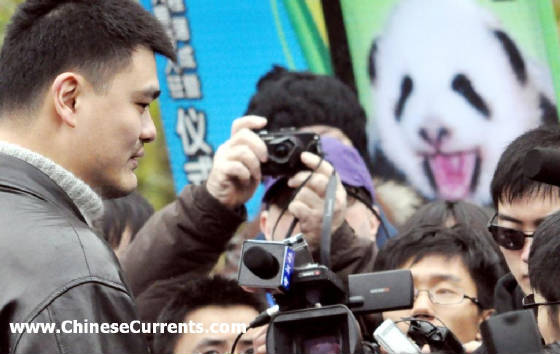
|
| Pandemonium |
|

